IN PICTURES
2024 Sony World Photography Awards: Landscape, wildlife and nature photography
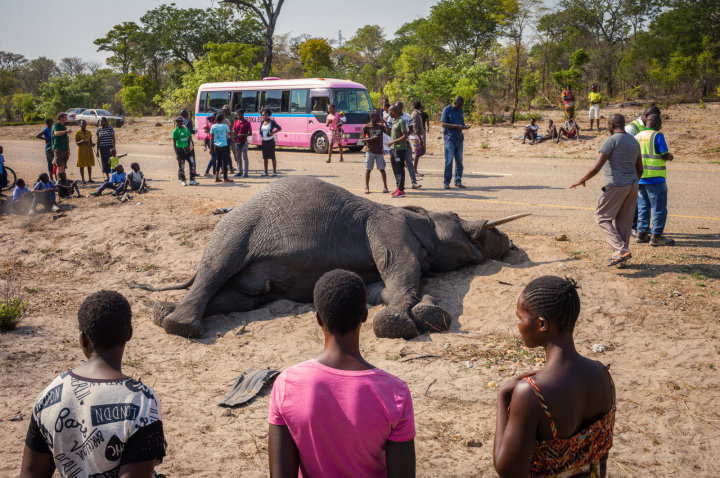
The Sony World Photography Awards returns to celebrate contemporary photography and the ways the arts reflect the world around us. Here is a selection of the images from the Professional competition in the landscape, wildlife and nature categories.
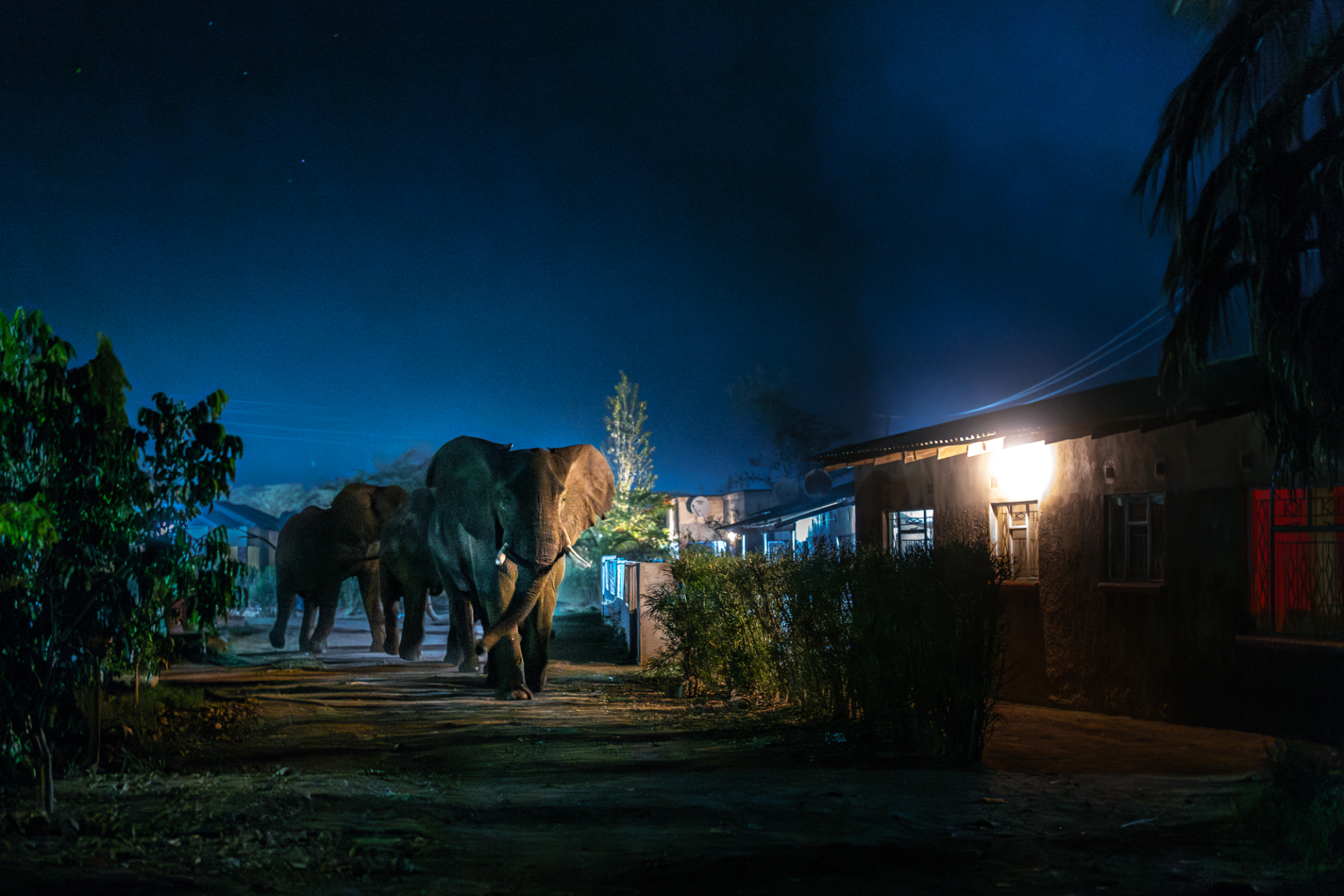
Elephants charge through Livingstone’s narrow streets, their towering figures trumpeting into the night. Altered habitats mean they emerge from the national park at dusk to seek food within Livingstone. A nighttime curfew, urging the community to stay indoors, aims to reduce human-wildlife conflict. The delicate equilibrium between humans and elephants in rural parts of Zambia is being disturbed as both populations vie for limited resources. The expansion of settlements and unsustainable agriculture is encroaching on elephant habitats, jeopardising the well-being of both human livelihoods and the elephant population. The question arises: can humans and elephants coexist? These problems have been escalating in the past decade, and with the expectation of increased droughts due to our warming climate, establishing transfrontier wildlife corridors becomes essential. However, the establishment of these corridors faces challenges posed by settlements, agriculture and infrastructure, which results in daily human-wildlife conflict. As these persistent issues continue it is increasingly evident that the local community plays a vital role in fostering a harmonious coexistence between humans and elephants. Developing economically and socially viable models for coexistence within the local community will be crucial for the long-term survival of both elephants and humans. Image: © Jasper Doest, Netherlands, Finalist, Professional competition, Wildlife & Nature, Sony World Photography Awards 2024
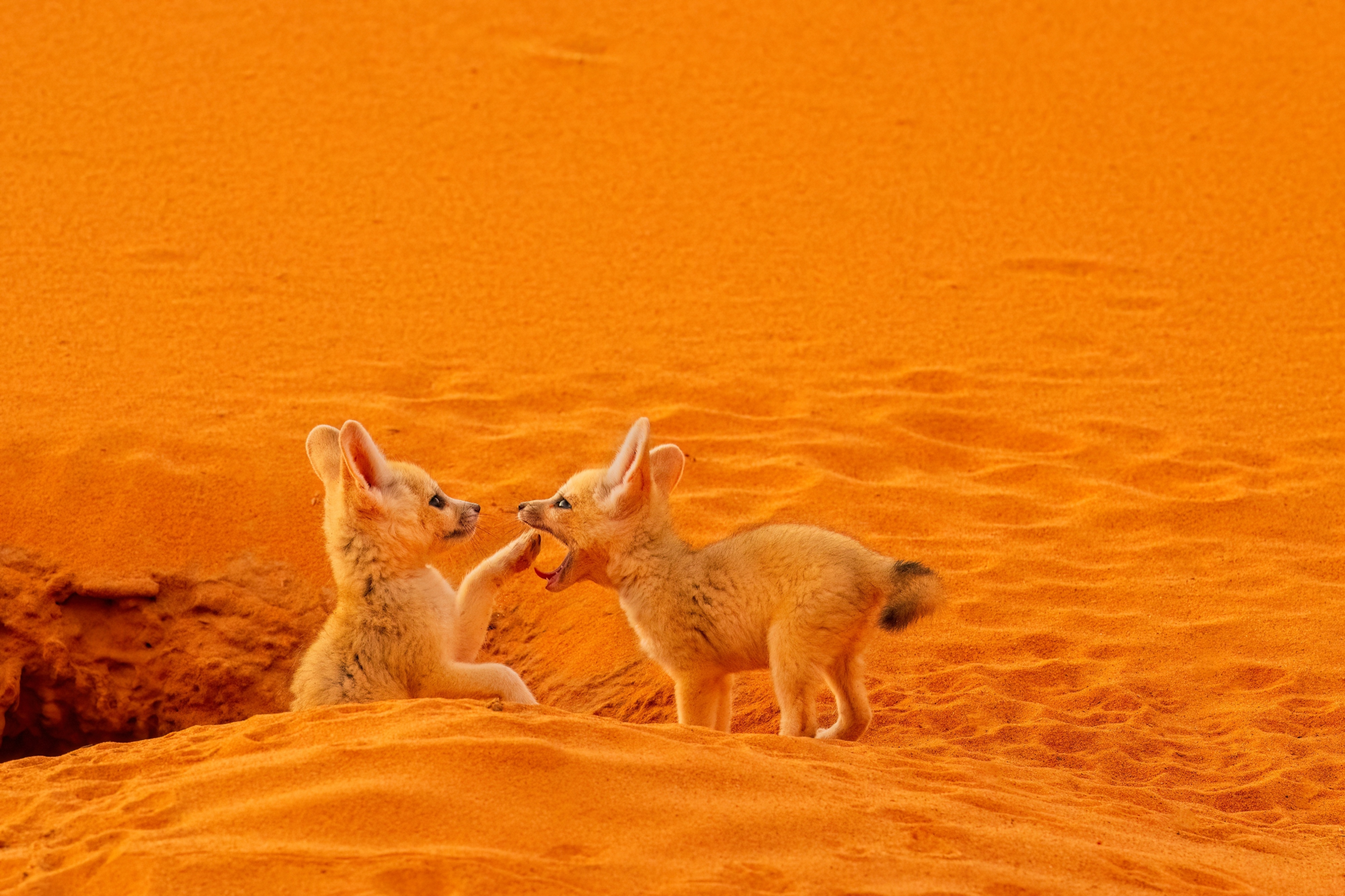
‘Playing Fennec Pups’. Fennec foxes are very active, playful and incredibly mobile. An adult male fox can jump vertically up to 70 cm and more than 100 cm horizontally from a standing position, almost four times its length. In The Little Prince, written by the French pilot and writer, Antoine de Saint-Exupéry, the titular character meets a fox. Most people have no idea that the creature in question is a desert fox, which holds particular significance for Saint-Exupéry: when he crashed his plane in the North African Sahara Desert, these desert animals kept him company for several days. Image: © Lukas Zeman, Czech Republic, Shortlist, Professional competition, Wildlife & Nature, Sony World Photography Awards 2024
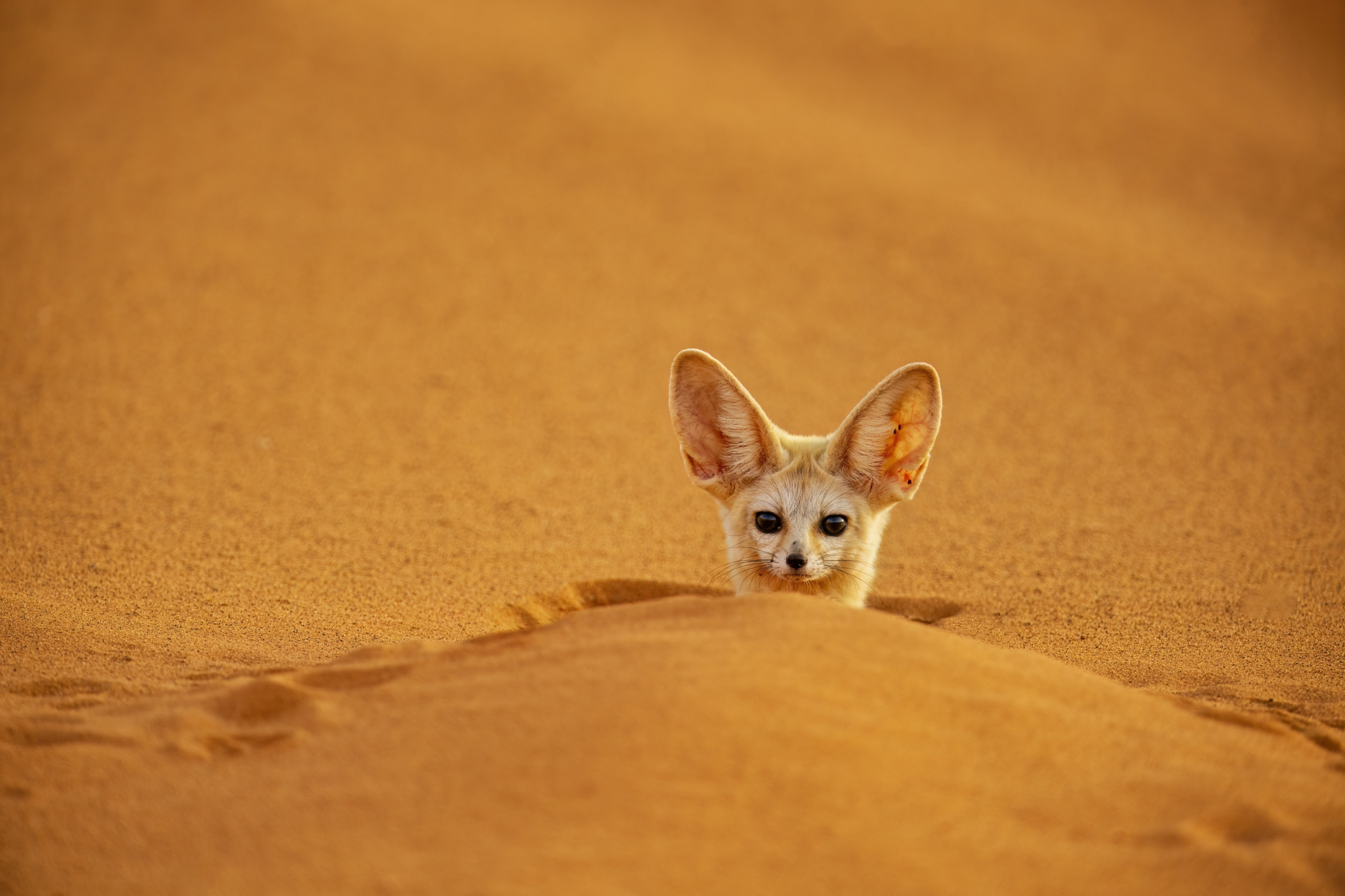
‘The Fennec in His Hole’. A fennec fox, also known as a desert fox, almost hidden in his hole in dunes in the Sahara desert. Image: © Lukas Zeman, Czech Republic, Shortlist, Professional competition, Wildlife & Nature, Sony World Photography Awards 2024
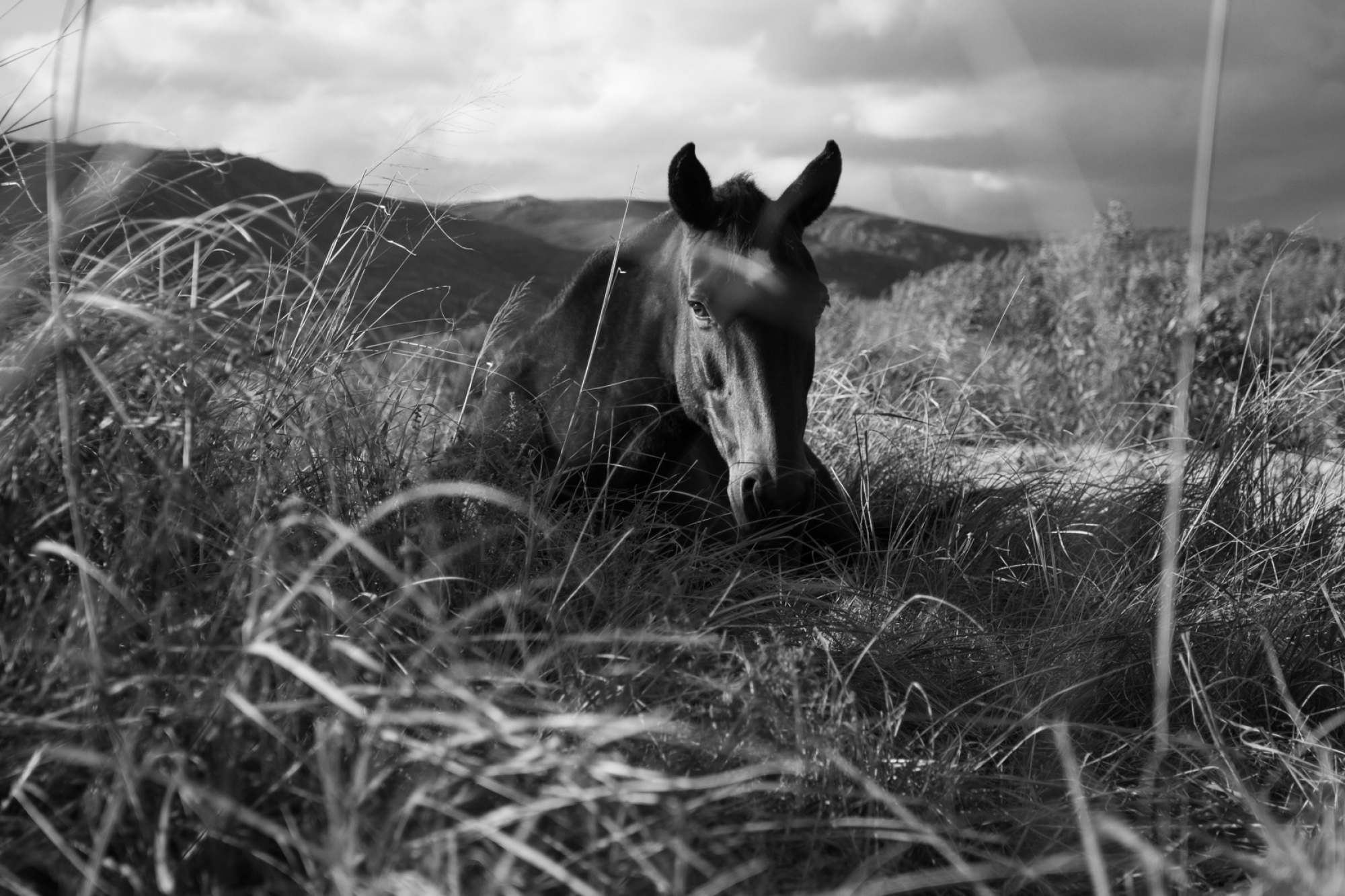
“I first encountered members of the herd, including a young foal with its left eye missing, in 2014 amid a clump of burnt out, alien trees. It was from one of these trees that the singer Johannes Kerkorrel had hanged himself in November 2002. Home is Where The Horse is follows a herd of wild horses inhabiting the Bot river estuary at the Rooisand Nature Reserve, in the Overberg region of South Africa. As an equestrian with a broad knowledge of equine behaviour, on extremely rare occasions I would insert myself in their presence as a respectful observer; non-threatening and mindful to avoid any form of dependence, trust or disruption. Over the past decade I have found this to be a deeply personal and healing process. Image: © Jacques Smit, South Africa, Shortlist, Professional competition, Wildlife & Nature, Sony World Photography Awards 2024
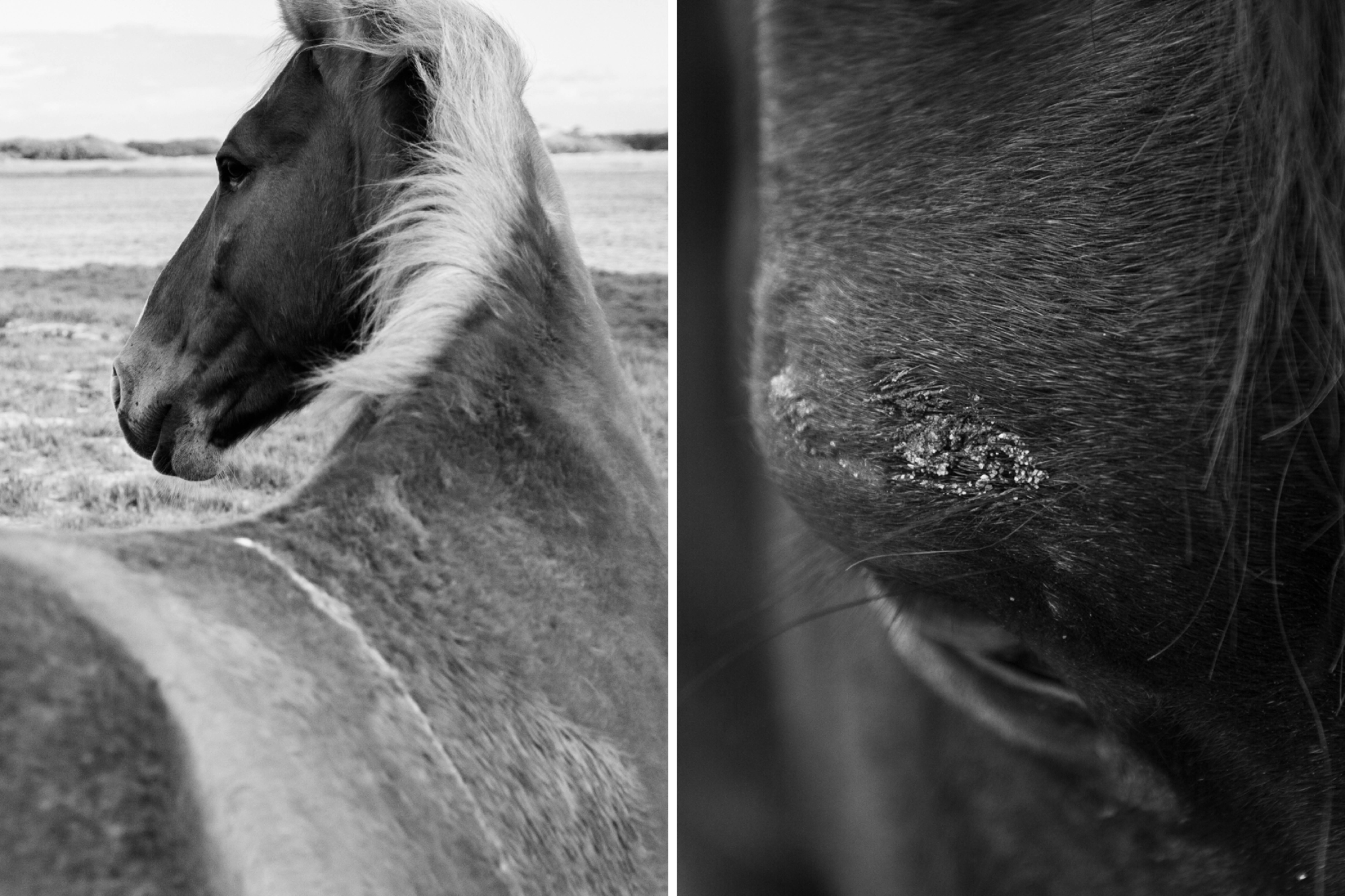
An alternative origin theory connects the herd to eight British horses that survived the HMS Birkenhead shipwreck, at nearby Gansbaai, in 1852. Image: © Jacques Smit, South Africa, Shortlist, Professional competition, Wildlife & Nature, Sony World Photography Awards 2024
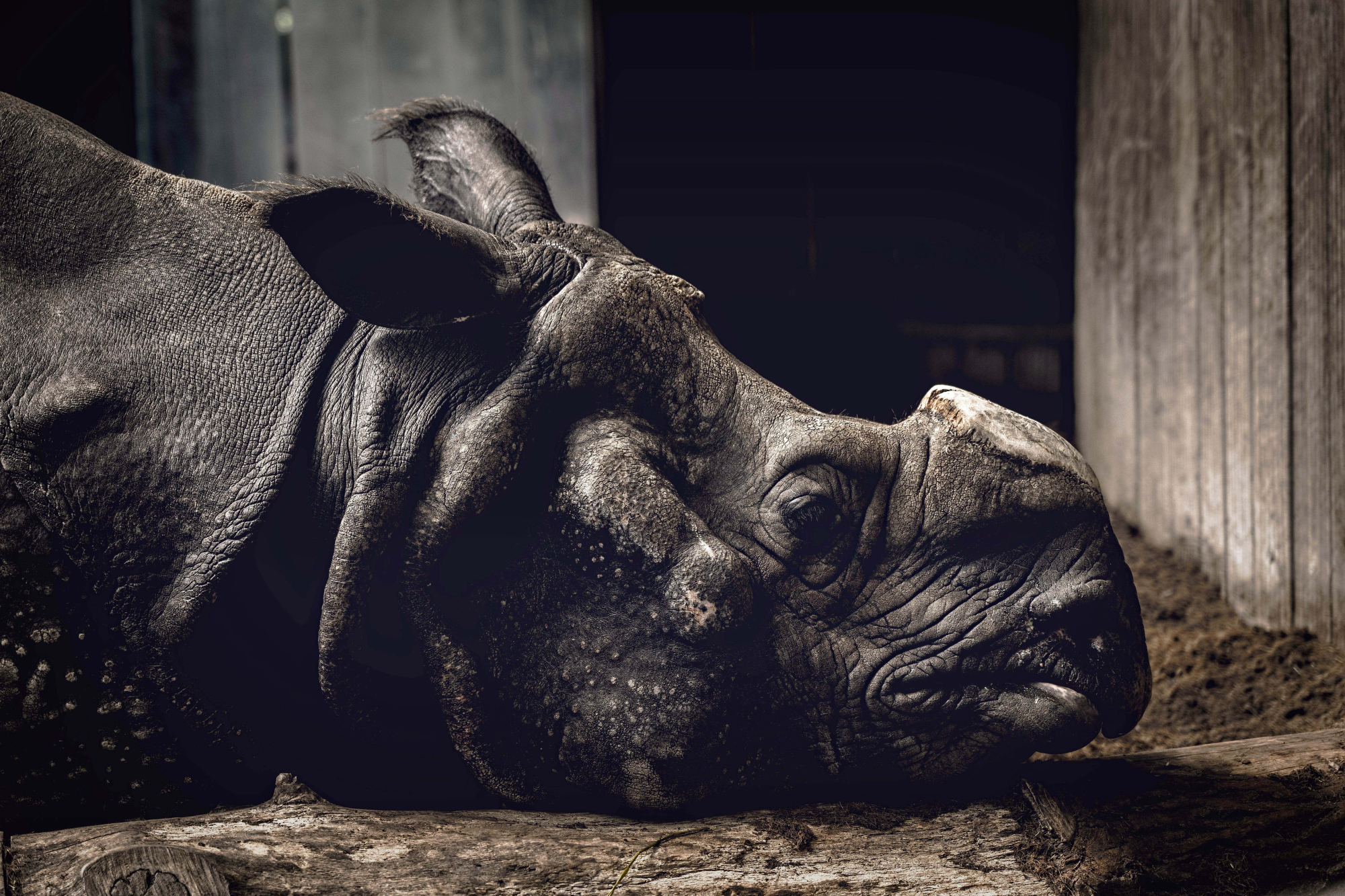
‘If Eyes Could Speak, What Would They Say? (Munich)’. Rhinos with injured horns suffer from pain, infections and a reduced ability to defend themselves. Despite the pain a rhino may endure, their strength and resilience is a testament to the beauty of these creatures. As poaching and habitat loss continue to threaten their survival, rhino conservation efforts need to be supported and awareness raised to stop them being killed. The persistent human desire for rhino horn – for everything from traditional medicines to hangover cures or status symbols – drives the slaughter of more than 1,000 of these majestic animals each year in South Africa. To protect them from poachers, some rhinos are now deliberately dehorned, something that is considered a necessary evil by anti-poaching campaigners in Africa. However, while cutting off a rhino’s horn prevents poaching, it also changes their behaviour and affects their ability to interact or establish territory. Either way, they are the ones that suffer. With this series I want to share the painful story of two rhinos, one living in Munich, Germany, and the other in Kolkata, India. Despite being separated by thousands of miles, these beautiful creatures have a shared past: both of them have been stripped of their once-proud horn, symbolising the harm that humans can inflict upon wildlife. Image: © Haider Khan, India, Finalist, Professional competition, Wildlife & Nature, Sony World Photography Awards 2024
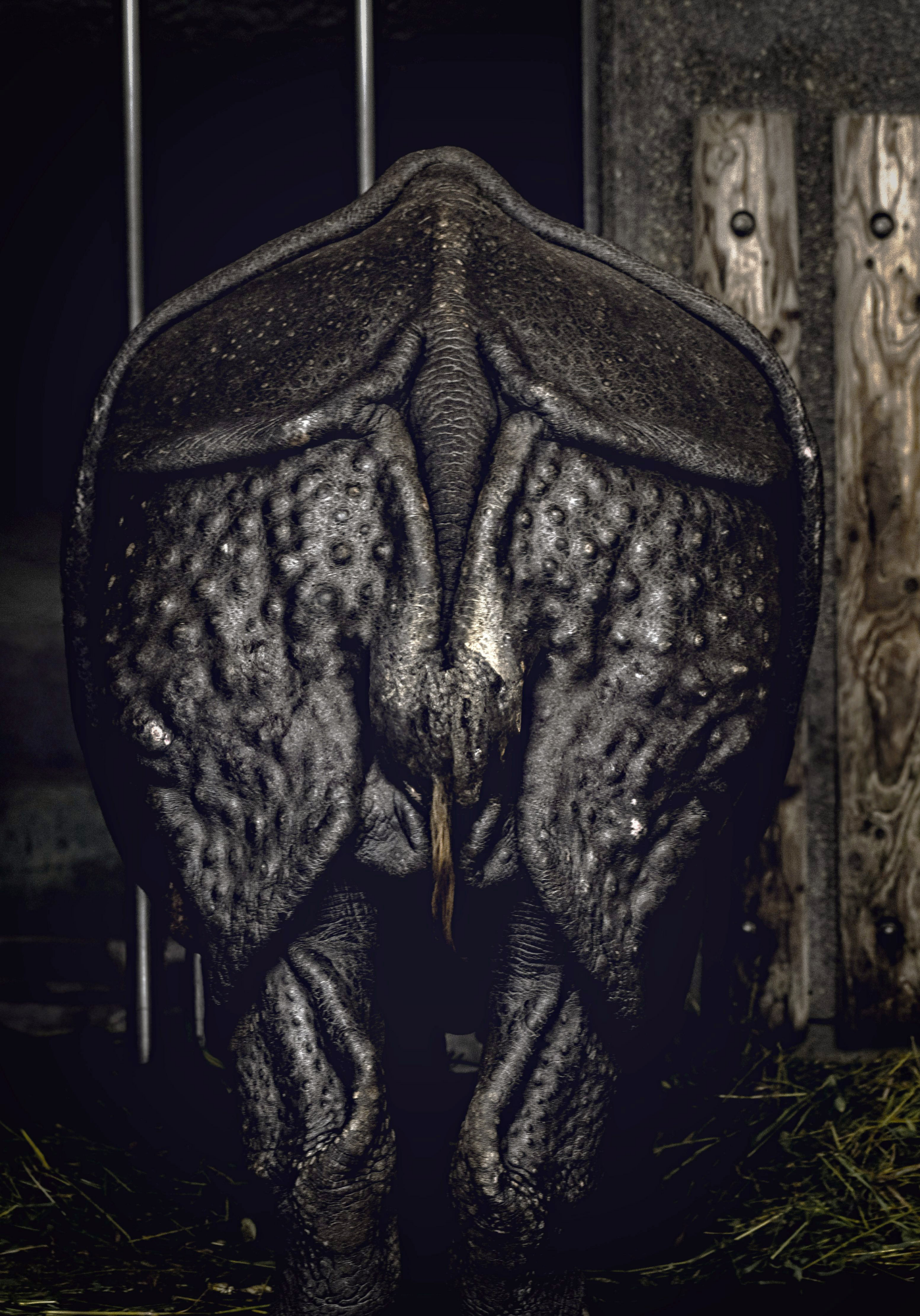
‘The Crisis of Masculinity (Munich)’. Male rhinos will fight with their horns to defend their territory from other males, so dehorning can affect the size of their domain. The behaviour of female rhinos might also change, as they use their horns to defend themselves and their calves from predators or harassment from male rhinos. Image: © Haider Khan, India, Finalist, Professional competition, Wildlife & Nature, Sony World Photography Awards 2024
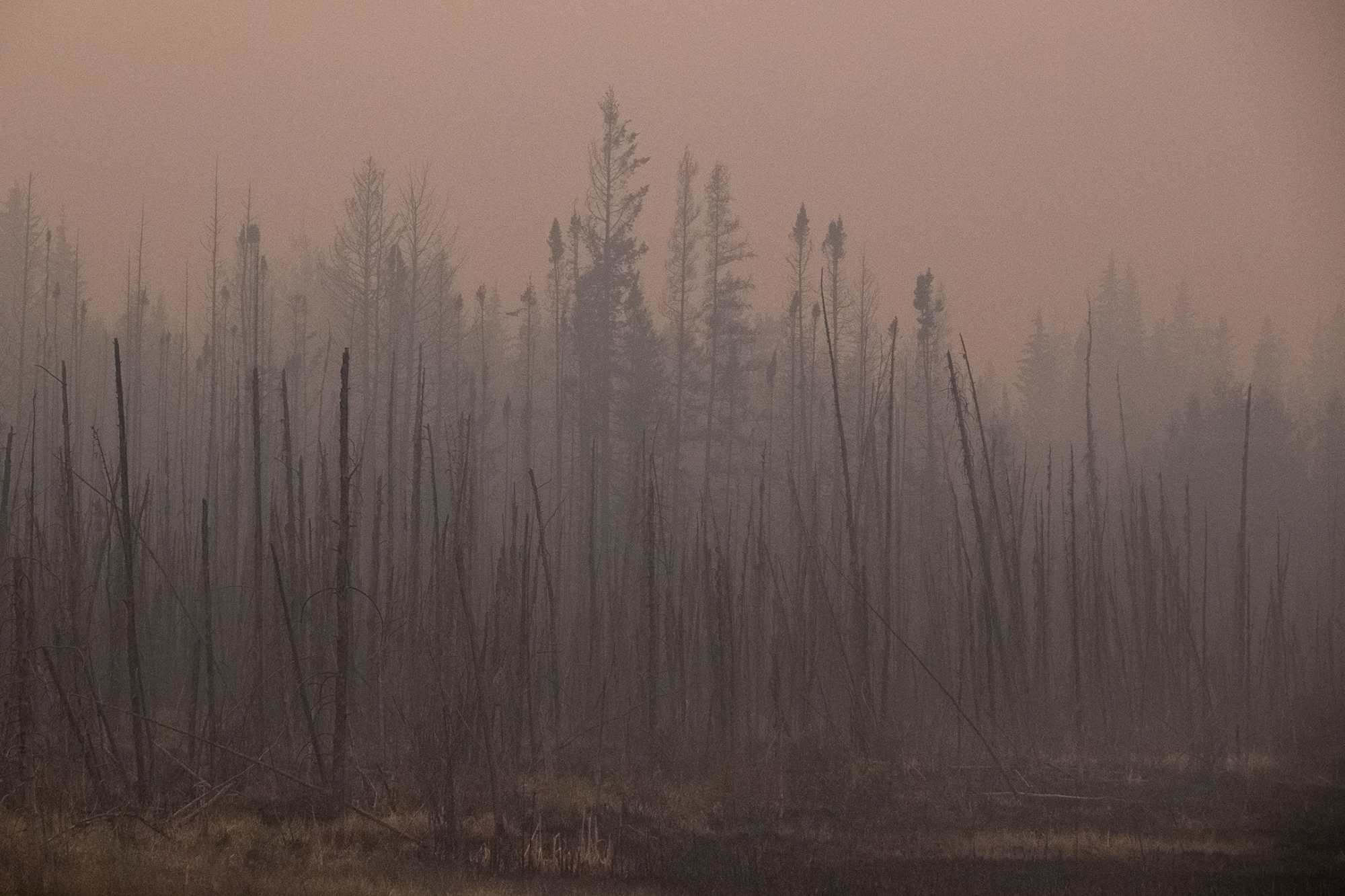
‘Canada’s Wildfire Smoke Haze’. Smoke from nearby fires fills the air with smoke in Shining Bank, Alberta. This series depicts Alberta, Canada, in May 2023, as various wildfires struck the area. Smoke from these fires wafted to America and beyond, sparking numerous angry articles about Canada’s fire season. Image: © Jen Osborne, Canada, Shortlist, Professional competition, Wildlife & Nature, Sony World Photography Awards 2024
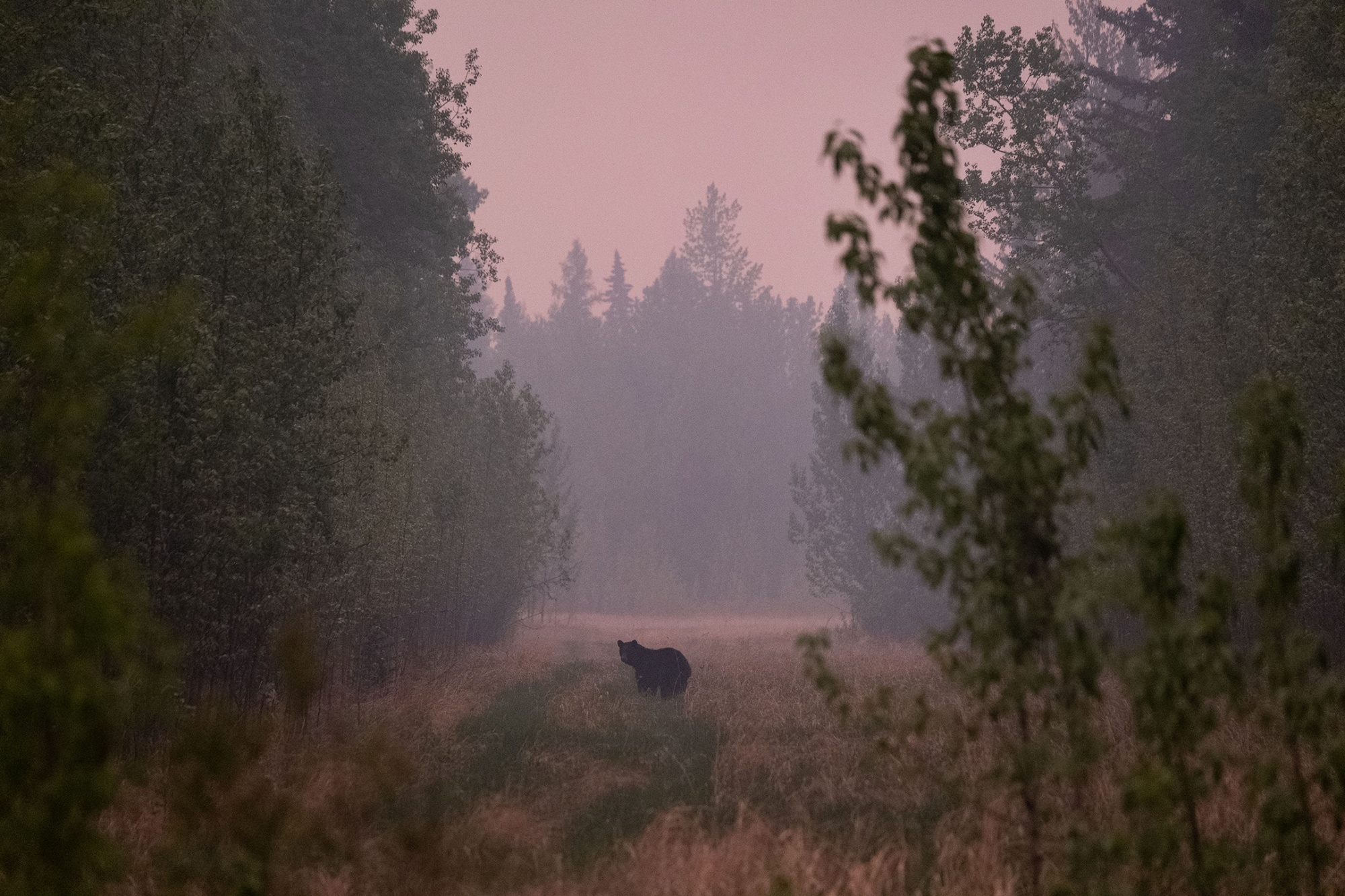
‘Canada’s Wildfire Smoke Haze’. A black bear wanders through a fire zone in Shining Bank, Alberta. This series depicts Alberta, Canada, in May 2023, as various wildfires struck the area. Image: © Jen Osborne, Canada, Shortlist, Professional competition, Wildlife & Nature, Sony World Photography Awards 2024
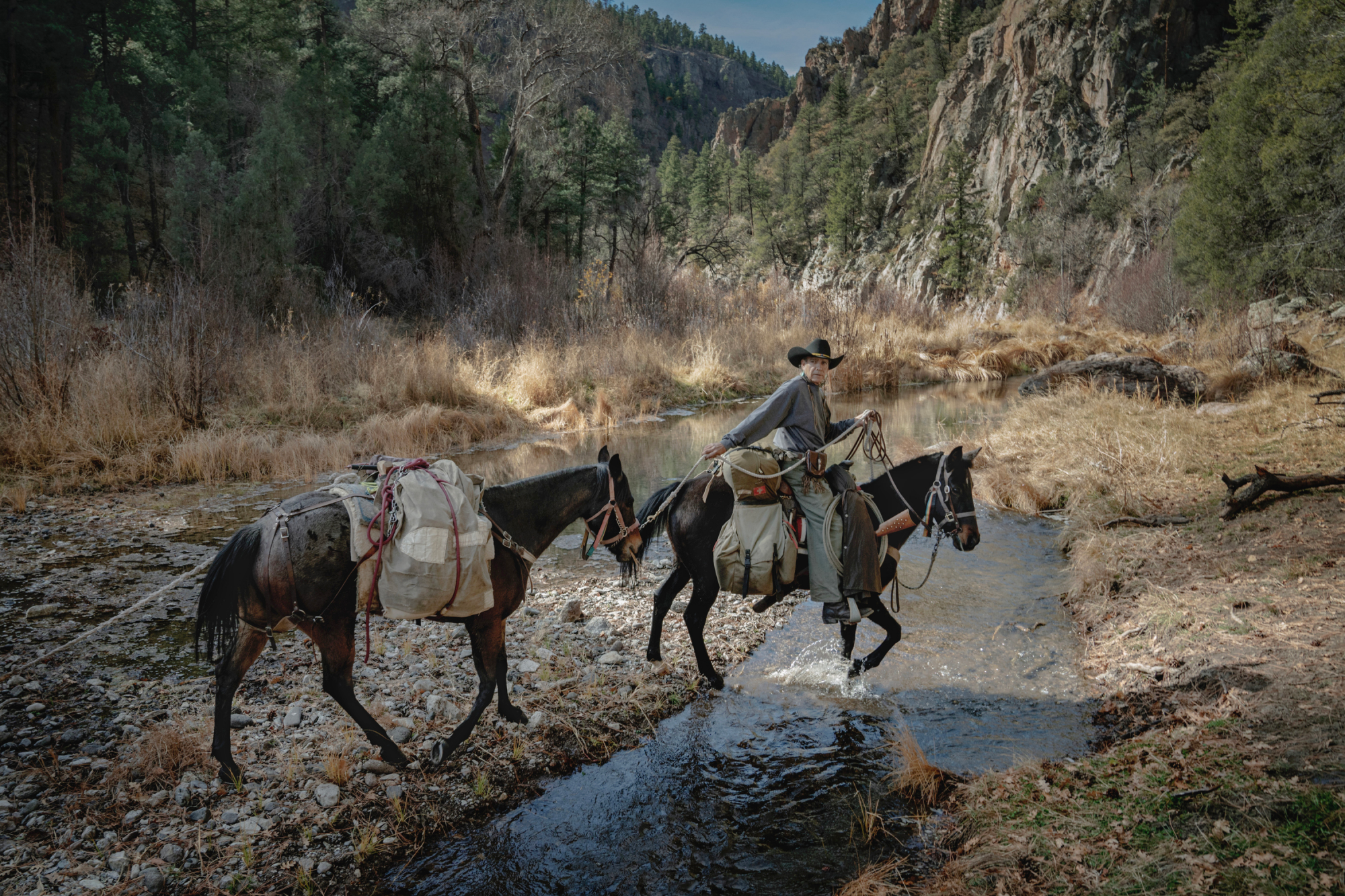
‘If the government’s idea of wilderness was putting the land back to the way it had been, then why not put the Apache back?’ asks backcountry guide Joe Saenz, a member of the Chiricahua Apache Nation who leads horseback trips exploring the Gila Wilderness. There is no specific word for wilderness in the Apache language he speaks, just a word for land: benah. The Gila Wilderness spans 2,250 square kilometres of rugged country in southern New Mexico, USA. In 1924, the Forest Service designated it the world’s first wilderness area. This milestone of American conservation largely came about thanks to a young forester called Aldo Leopold, who saw the wilderness as a place to be protected both for – and from – humans. However, the Gila has always been inhabited by people, from Mogollon cliff dwellers thousands of years ago to the more recent Chiricahua Apache, who lived in the region for centuries before they were forced onto reservations. Image: © Kathleen Orlinsky, United States, Shortlist, Professional competition, Wildlife & Nature, Sony World Photography Awards 2024
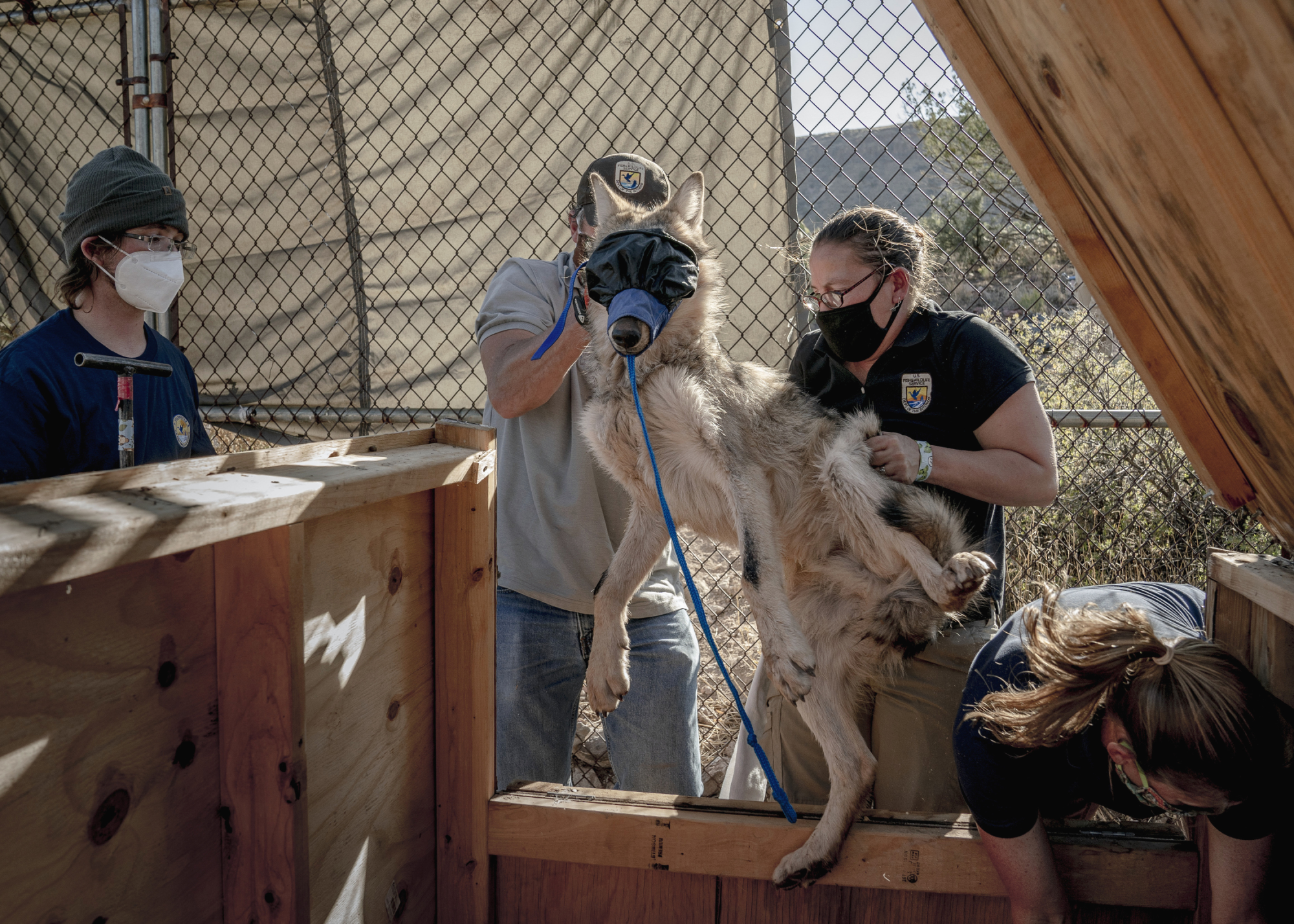
Before they can be reintroduced to the Gila Wilderness, captured Mexican grey wolves have to be vaccinated. To keep the wolves calm while the vaccines are administered, they are first blindfolded. Image: © Kathleen Orlinsky, United States, Shortlist, Professional competition, Wildlife & Nature, Sony World Photography Awards 2024
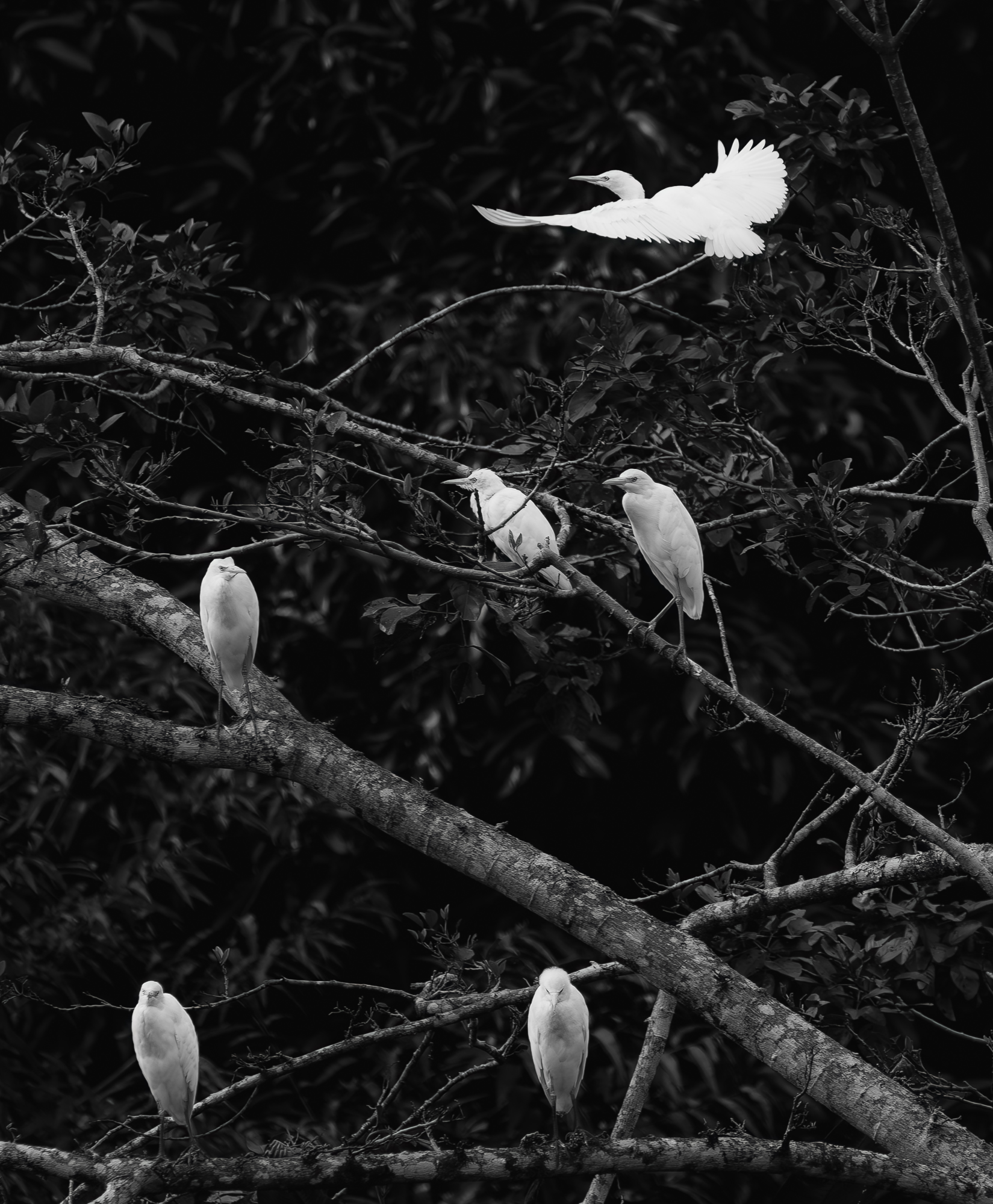
‘Egret Congregation’. Egret in flight in the Arenal Jungle in Costa Rica. “On a recent trip to Costa Rica, I was fascinated by the habitat of the herons and egrets I observed in the Arenal Volcano and La Fortuna area. Rather than just focusing on the birds, I wanted to ‘pull back’ and show the lush and rhythmic environment they inhabited. The black and white medium worked well, highlighting the contrast of the dark and mysterious fauna against the white birds.” Image: © Steven Begleiter, United States, Shortlist, Professional competition, Wildlife & Nature, Sony World Photography Awards 2024
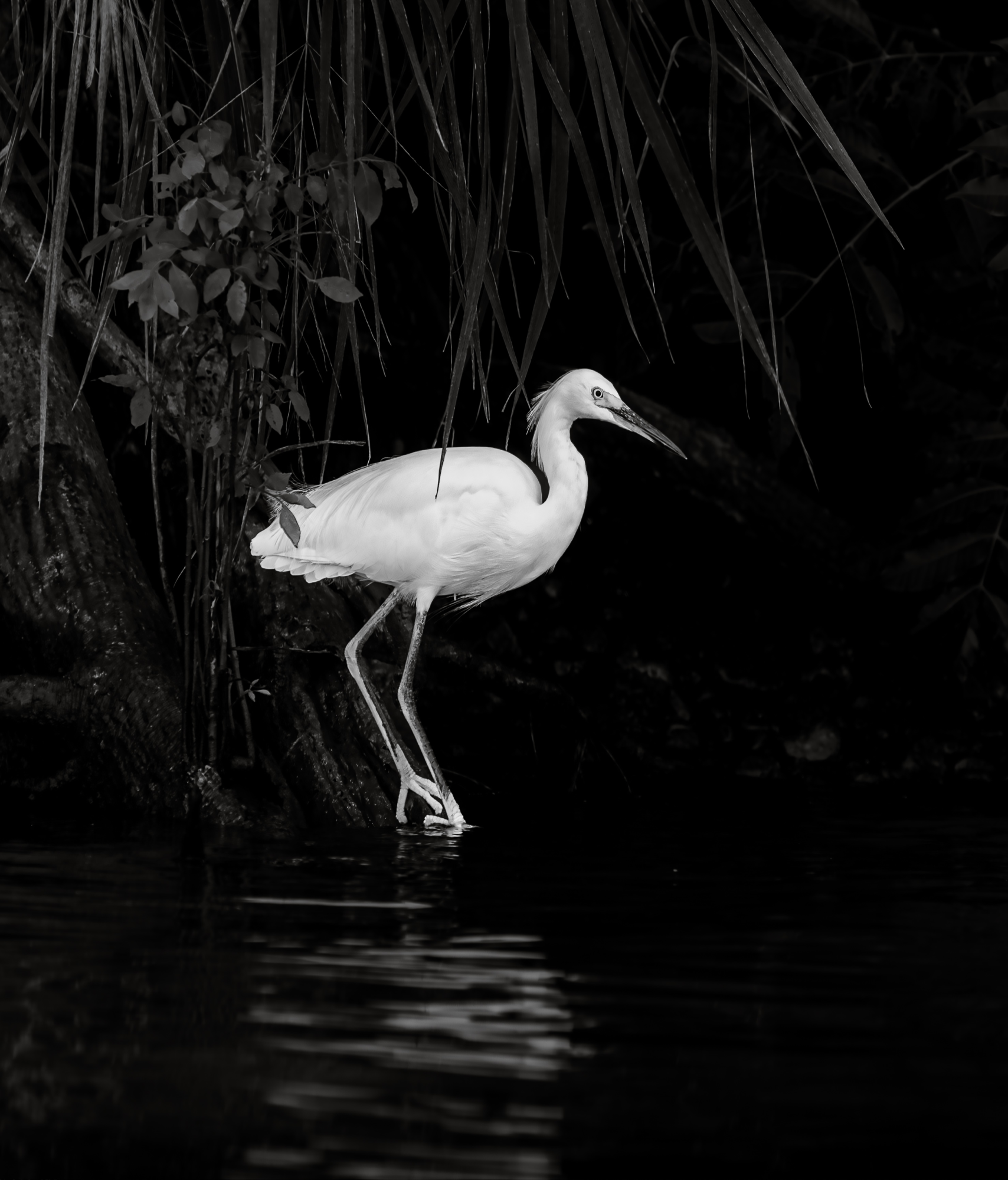
‘Solitude’. A white heron stands on the shore in a mangrove in Nosara, Costa Rica. Image: © Steven Begleiter, United States, Shortlist, Professional competition, Wildlife & Nature, Sony World Photography Awards 2024
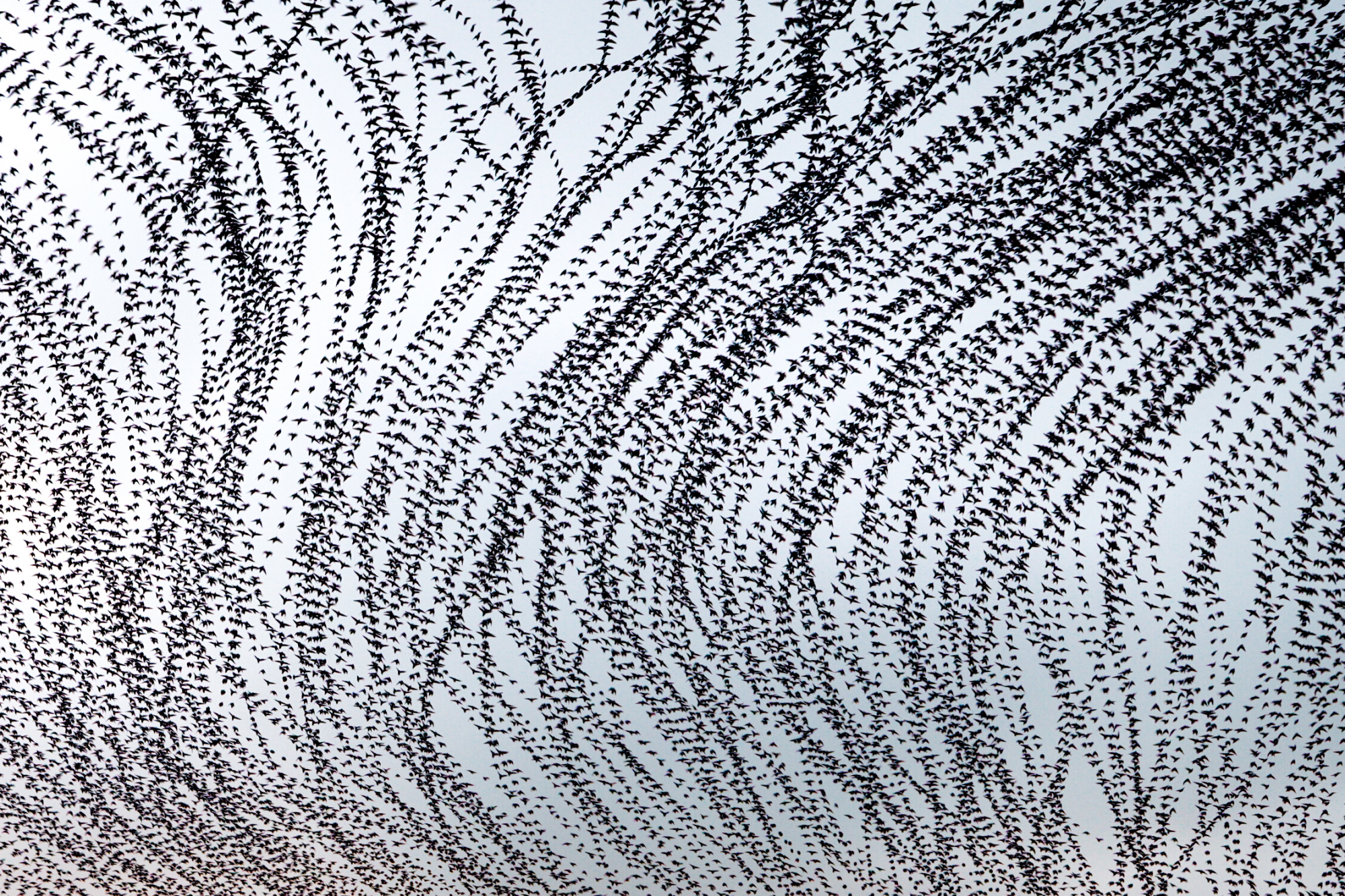
‘Trails’. As dusk approaches, starlings arrive from their feeding grounds, filling the sky with a barrage of noise. During the day the birds spread out into the fields to feed, but small flocks funnel together into progressively larger ones along flight lines towards the roost. Stoney Middleton, Derbyshire, UK. In the UK, starlings murmurate over their chosen roost site at dusk until, when the light has dropped, the flock descends en masse into the reeds or trees. Their mesmerising aerial displays appear almost choreographed with patterns emerging and dissolving in the sky. Nature has evolved a system that is robust to predation, with many eyes looking out for attack and risk shared among the group. The group achieves this without any leadership structure – the simple interactions between individuals create outcomes greater than the sum of their parts. I make my images by taking multiple successive exposures, which are overlaid onto the same print to reveal motion and behaviour that would be otherwise hidden. I’m interested in freezing packets of movement to enable the appreciation of both the intricate detail and scale of the coherent movement that might otherwise go unnoticed. Image: © Kathryn Cooper, United Kingdom, Shortlist, Professional competition, Wildlife & Nature, Sony World Photography Awards 2024
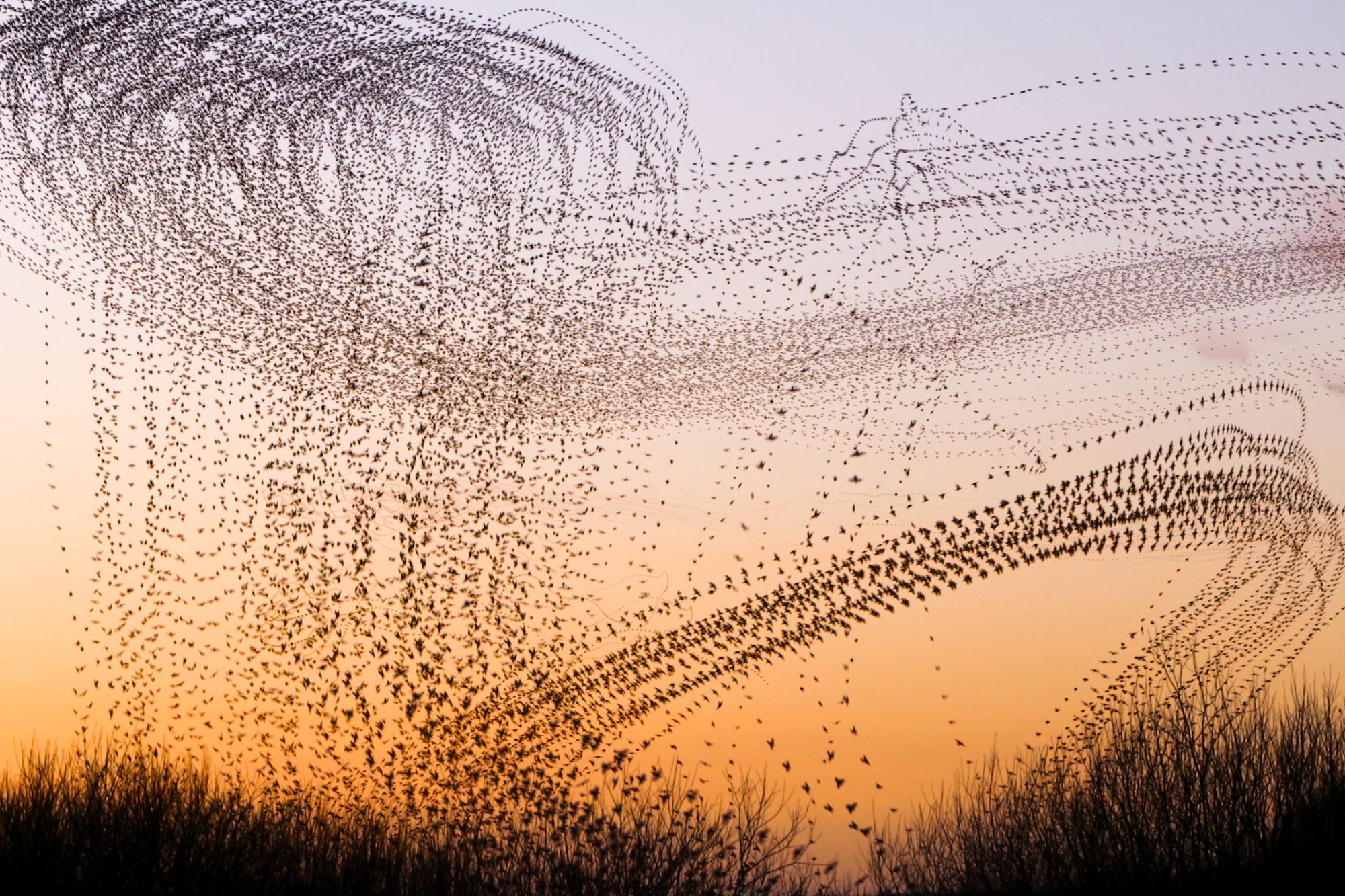
‘Sunset Swirls’. The starlings whirl in small groups in the fading sunlight of this calm evening – unusual due to the absence of predators. Image: © Kathryn Cooper, United Kingdom, Shortlist, Professional competition, Wildlife & Nature, Sony World Photography Awards 2024
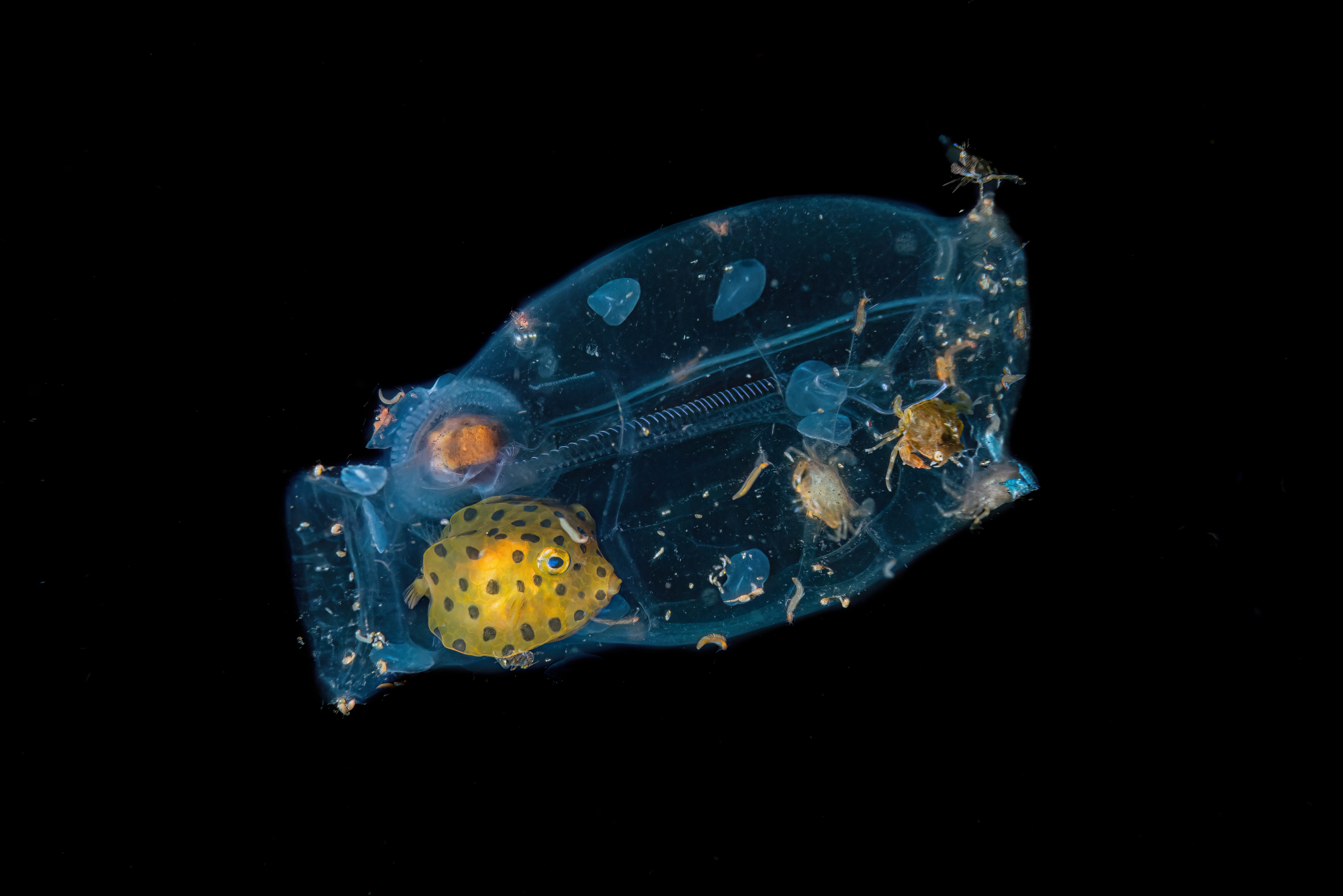
A tunicate jellyfish of about 4-6 cm in size, with a young yellow box fish inside, along with worms, shrimp, lobsters and crabs in larval form. This series is the result of eight dives in the Lembeh Strait, North Sulawesi, Indonesia. The photographs were taken at night using a technique that involves lowering a 10 metre line with eight alternating lights hanging from it into the ‘black water’. The lights are lowered 30 to 40 minutes prior to the dive and attract the larval or juvenile forms of different species. Just before the dive, the lights are hoisted back up and secured to a buoy, drawing the tiny, interesting creatures up with them. For the most part these larval forms are transparent, and range in size from just a few millimetres up to jellyfish measuring 4 cm. These photographs show how the tiny larval beings use tunicate jellyfish as protection from larger animals. Image: © Massimo Giorgetta, Italy, Shortlist, Professional competition, Wildlife & Nature, Sony World Photography Awards 2024
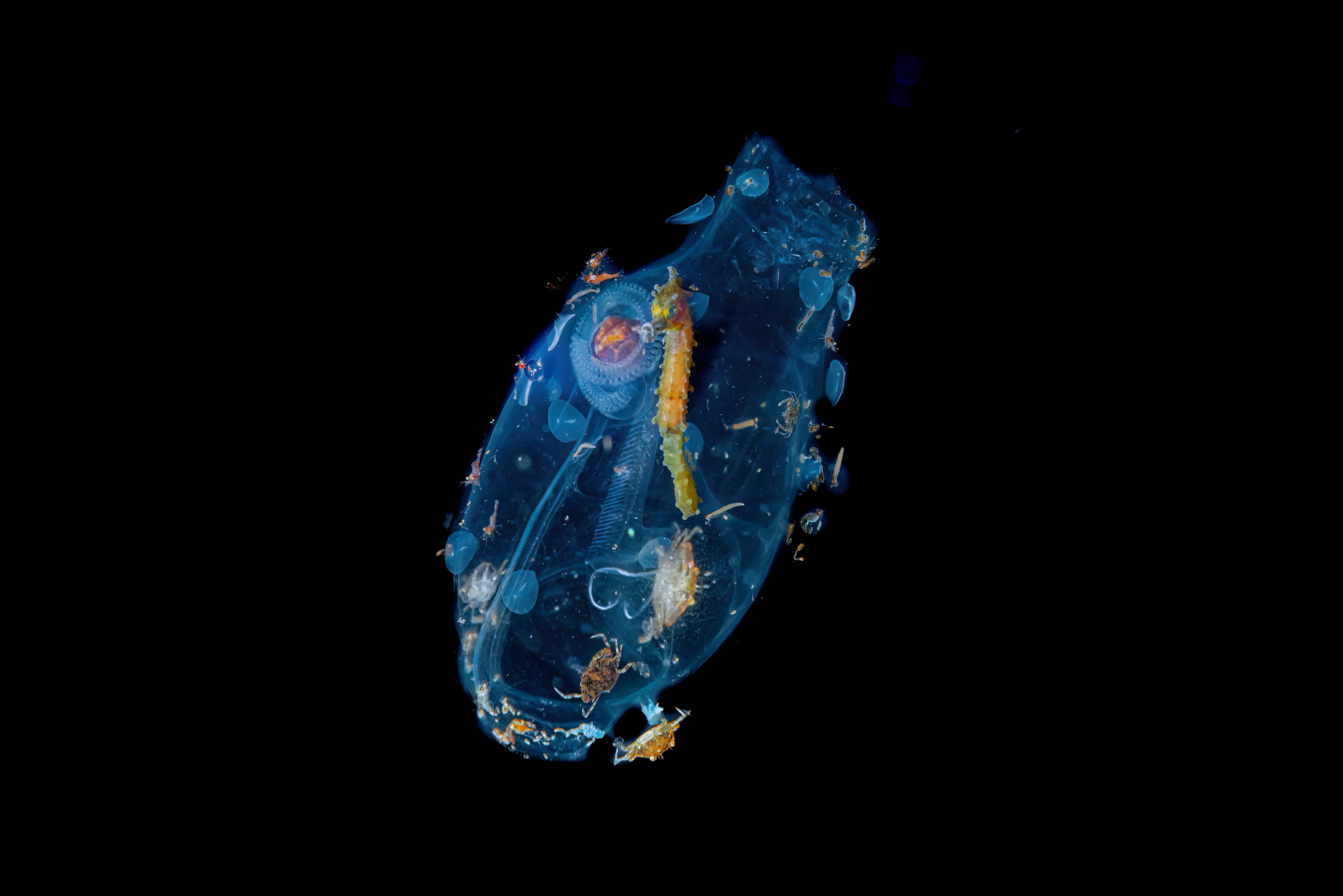
A tunicate jellyfish of about 4-6 cm in size, with a young yellow box fish inside, along with worms, shrimp, lobsters and crabs in larval form. © Massimo Giorgetta, Italy, Shortlist, Professional competition, Wildlife & Nature, Sony World Photography Awards 2024
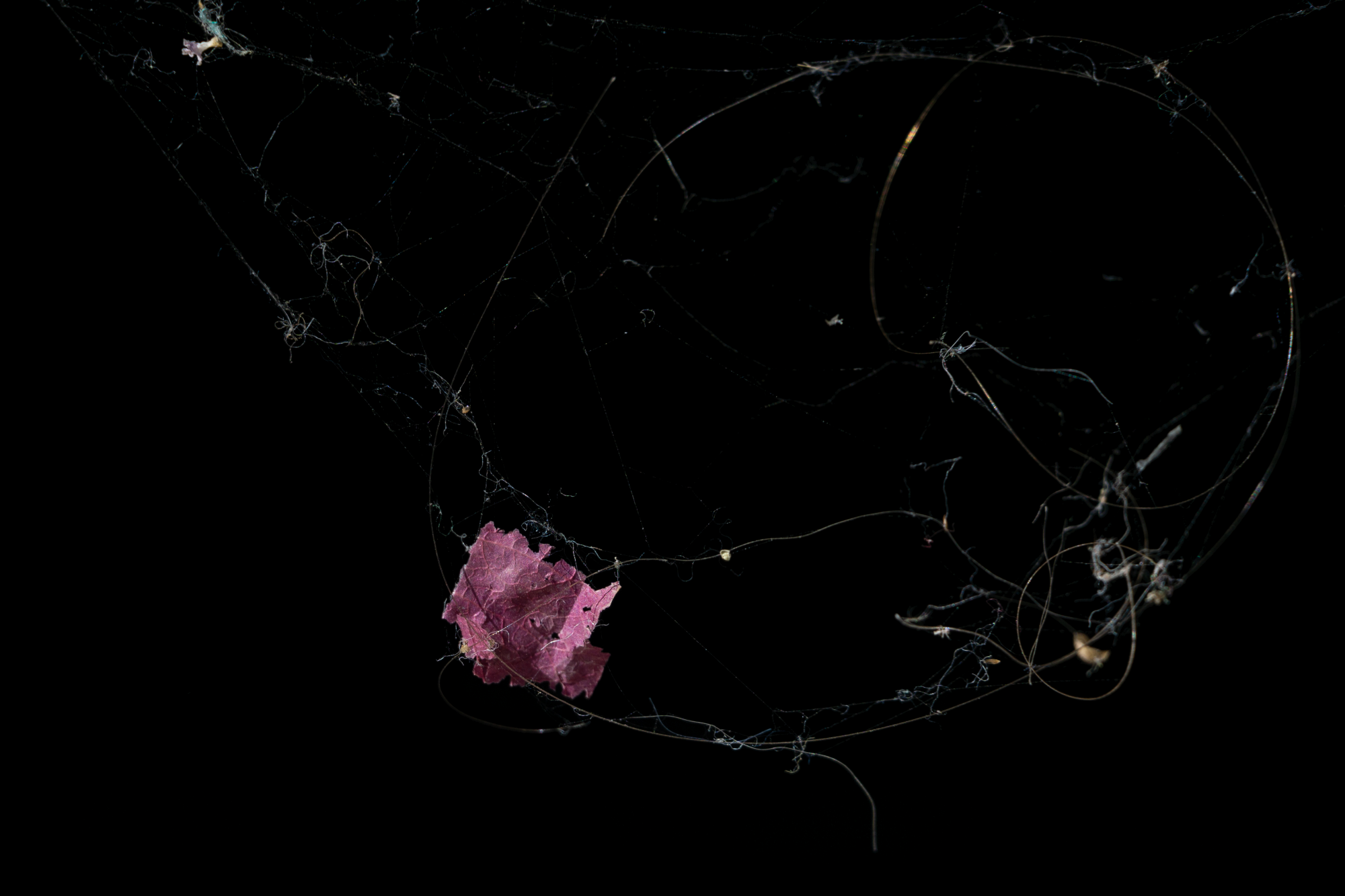
‘Suspended Worlds’. “Part of my Suspended Worlds series. The worlds hidden in spider webs serve as a metaphor for our private inner selves, of our deepest fears and aspirations. Photographed on location using natural light. This project started as an exploration of the world of spider webs, where both time and action are frozen, but it led to a personal journey into my deepest fears and aspirations. As I focused on what was hidden in the webs I became fascinated by the artful random creations that I found; the impermanent worlds that we don’t usually notice. I realised that these worlds resonate with me on a deeper level. They work as metaphors for the hidden lives of the people next to us, who we pass by every day and don’t really know anything about. We all have our private lives that we prefer to keep to ourselves; our personal mystic treasures, our inner selves. These are the innermost places where we can be whatever we choose to be”. Image: © Eva Berler, Greece, Finalist, Professional competition, Wildlife & Nature, Sony World Photography Awards 2024
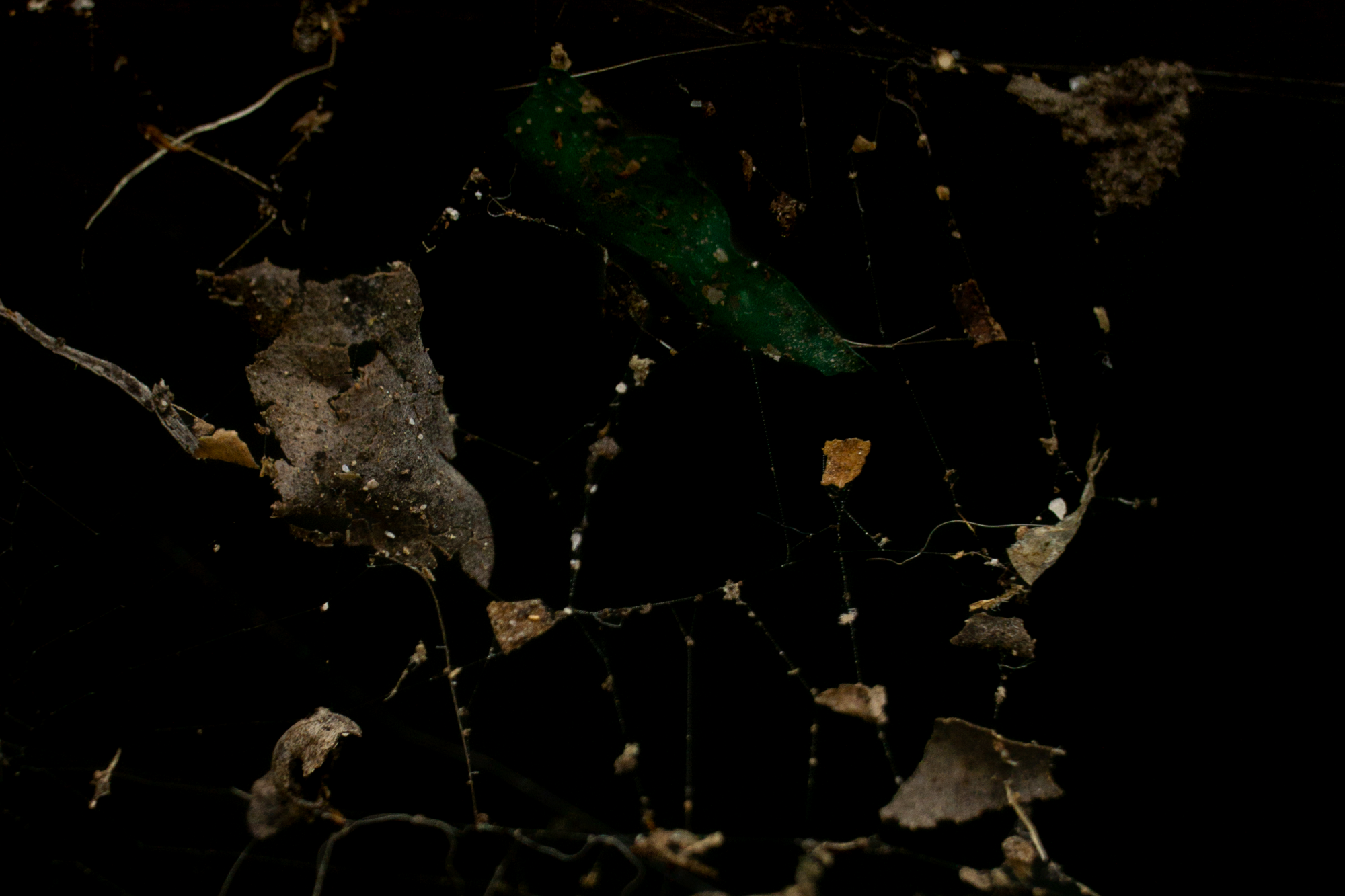
‘Suspended Worlds’. Image: © Eva Berler, Greece, Finalist, Professional competition, Wildlife & Nature, Sony World Photography Awards 2024
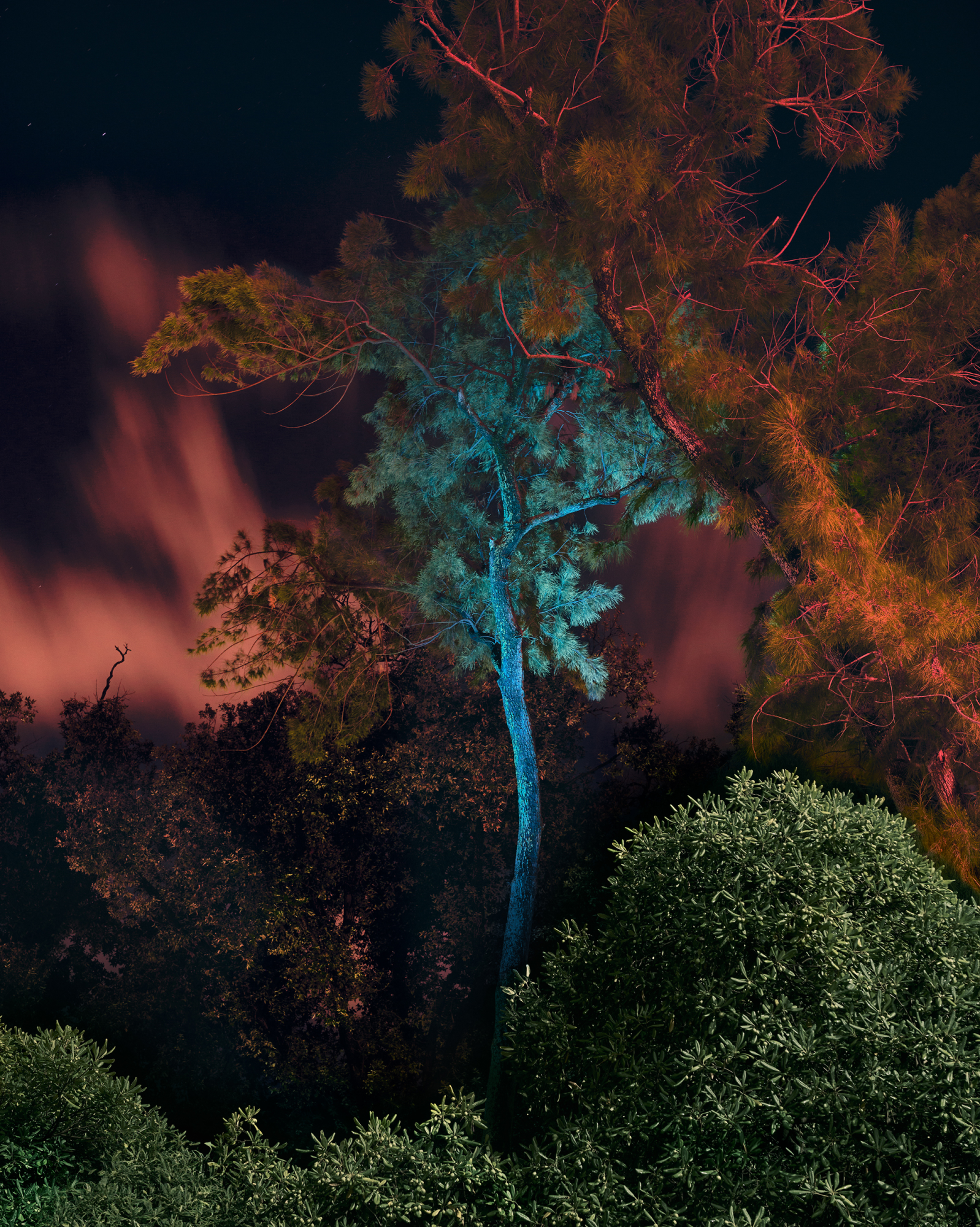
‘Wildfires of Palermo’. “Trees standing against the backdrop of a night sky in Palermo, illuminated by the red glow from the wildfires. In September 2023 I arrived in Palermo, in the midst of a gripping environmental problem that was unfolding across Sicily. The canvas of the night sky had been transformed into a captivating tableau as the flames from ongoing wildfires painted a surreal and enchanting spectacle. The ethereal glow was a juxtaposition of beauty and devastation”. Image: © Jim Fenwick, United Kingdom, Finalist, Professional competition, Landscape, Sony World Photography Awards 2024
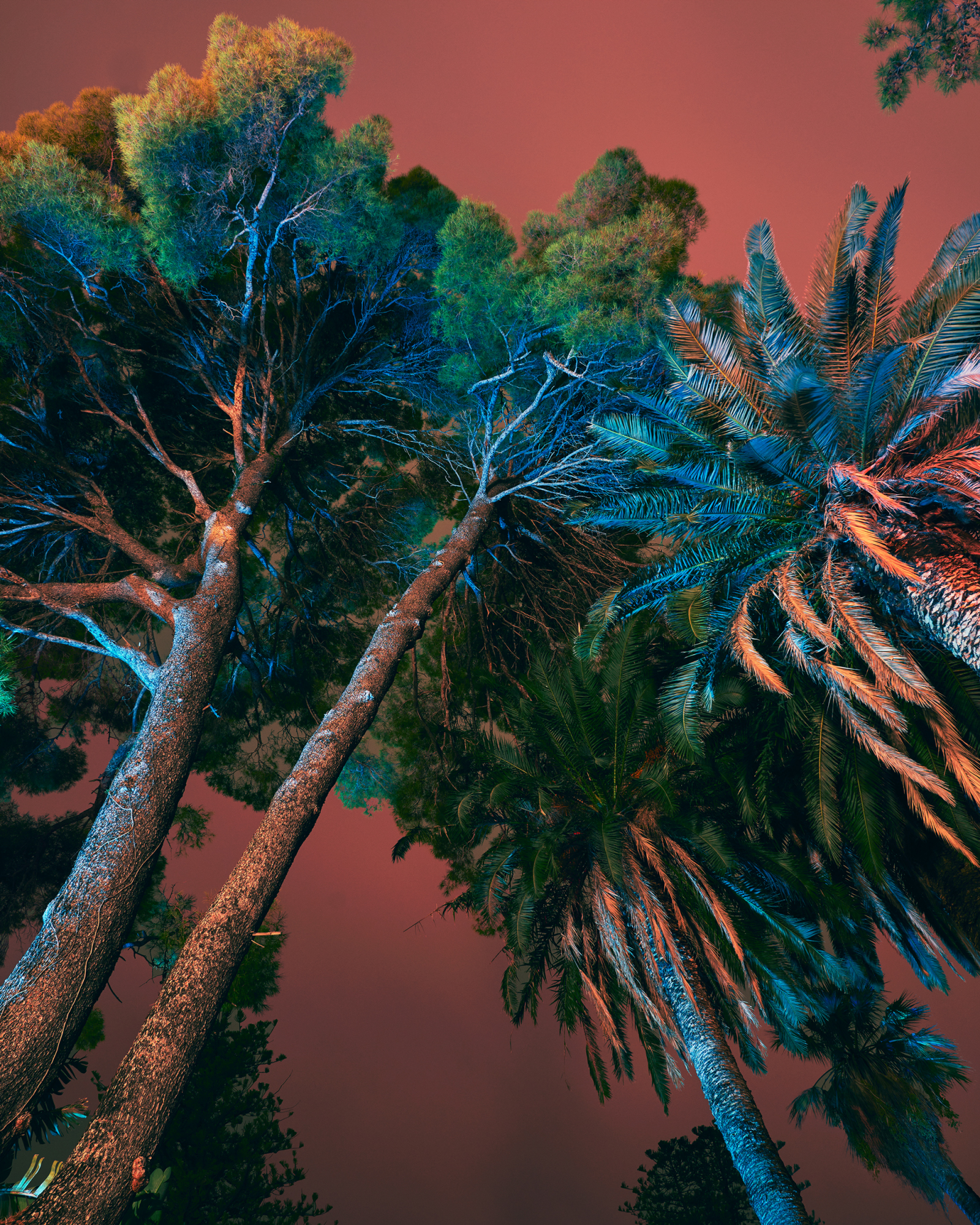
‘Wildfires of Palermo’. Trees standing against the backdrop of a night sky in Palermo, illuminated by the red glow from the wildfires. Image: © Jim Fenwick, United Kingdom, Finalist, Professional competition, Landscape, Sony World Photography Awards 2024
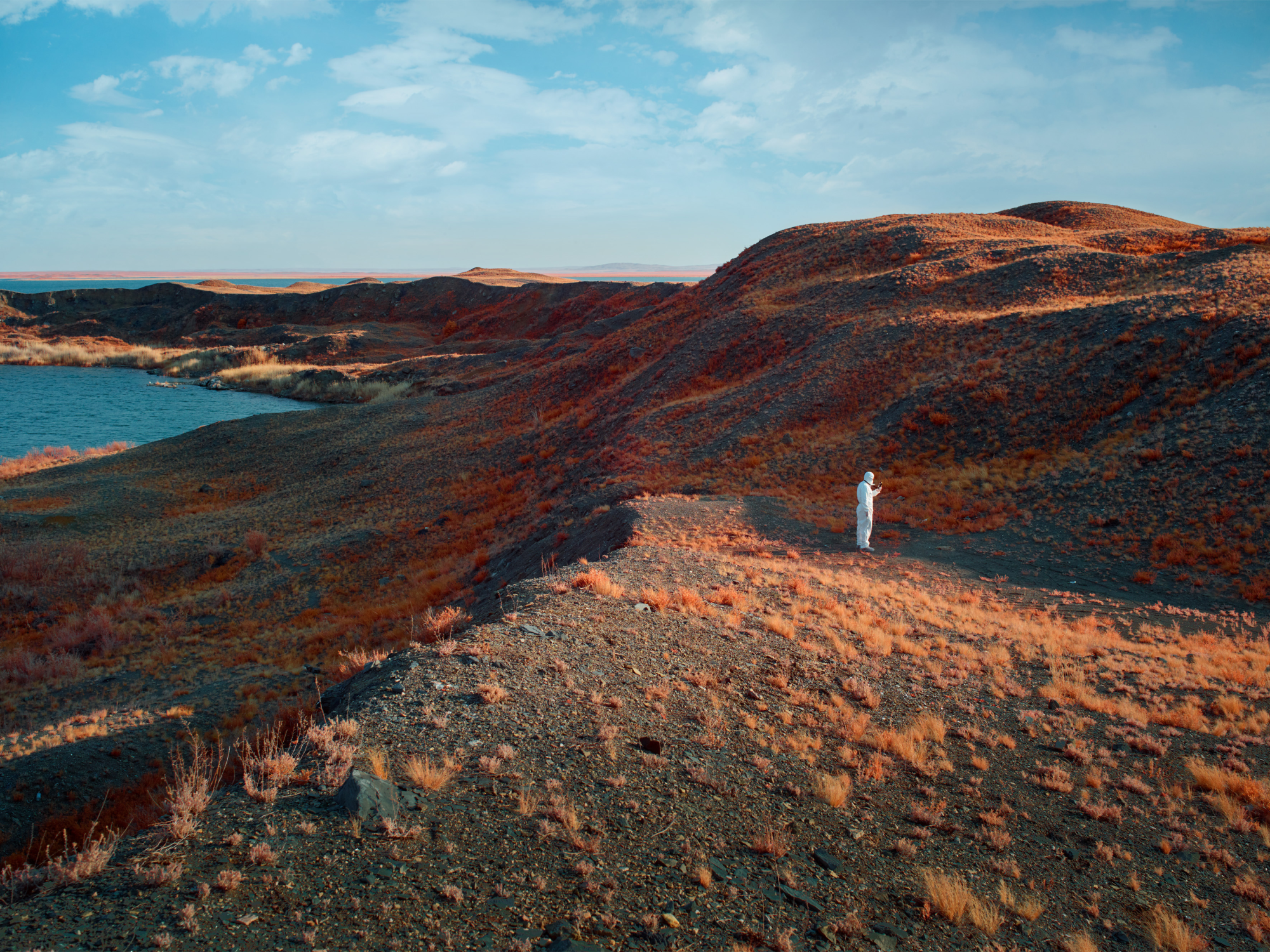
A dosimetrist measures radiation at the Southern ridge of Lake Shagan. This series explores a remote area of Kazakhstan known as ‘The Polygon’, which was once home to the Soviet Union’s major nuclear testing facilities. Between 1949 and 1989 more than 450 nuclear tests took place here, with little regard for their effect on the local people and environment. The full impact of radiation exposure was hidden for many years by the Soviet authorities and only became clear after the test site was closed in the early 1990s. The location is still heavily contaminated and can only be accessed in protective clothing. The images in this series were made using an infrared camera, which hints at a menace that is equally invisible to the human eye: the radiation resulting from the nuclear explosions. Local scientists employ infrared technology to assess the current conditions of contaminated sites. Green vegetation, reflects a significant amount of infrared light, allowing for a nuanced analysis of environmental health. The varying shades of reflection yield valuable insights into the overall toxicity of this irradiated landscape. Notably, foliage emerges as the primary concern in these locations due to its absorption of radiative particles from deeper layers of soil, making it a focal point for potential environmental hazards. Image: © Eddo Hartmann, Netherlands, Finalist, Professional competition, Landscape, Sony World Photography Awards 2024
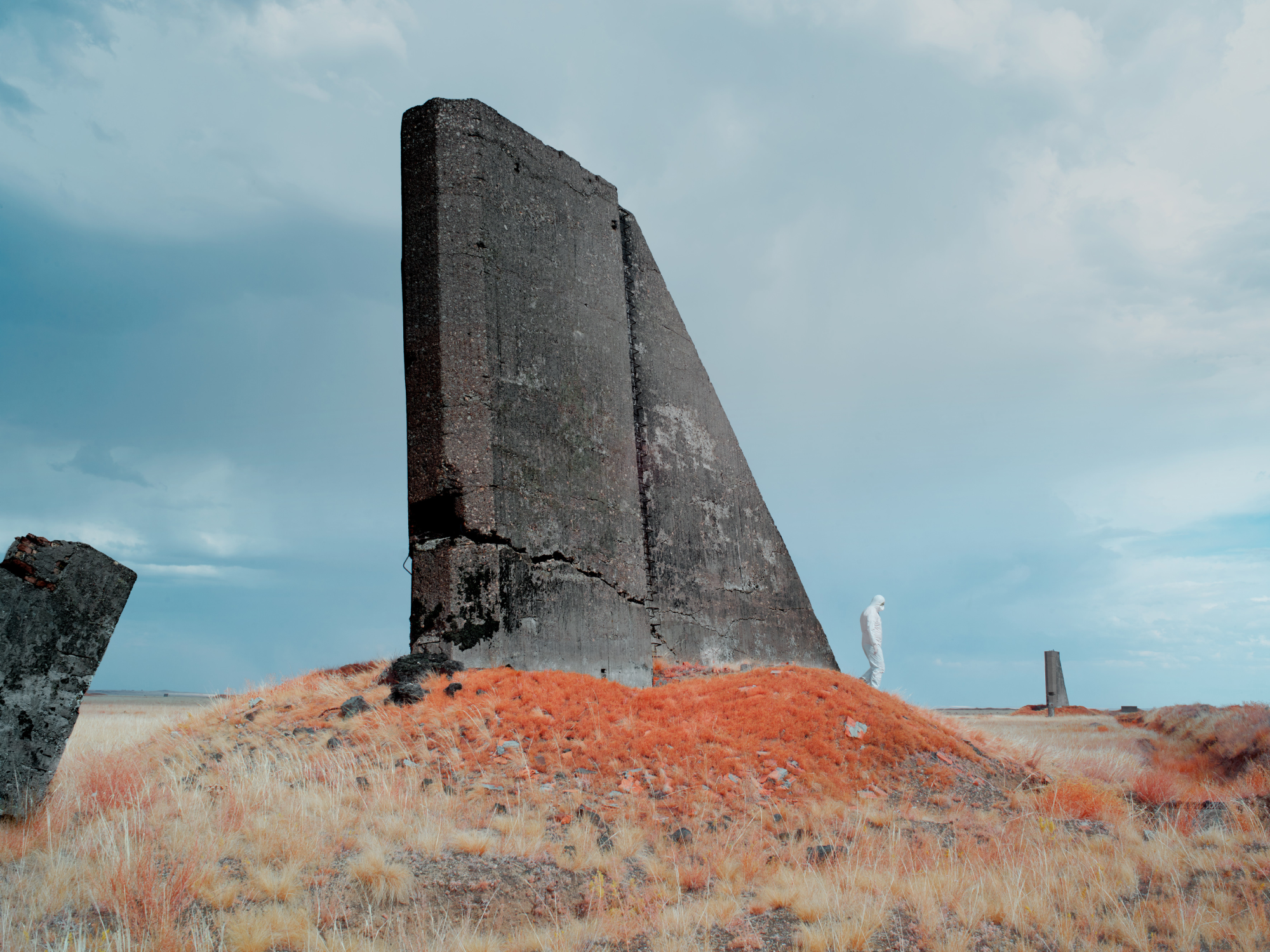
An infrared image of the remains of an observation tower at Opytnoe Pole. This was the first testing ground at the Semipalatinsk Test Site, which was a large-scale facility used between 1949 and 1962 for atmospheric nuclear tests. Image: © Eddo Hartmann, Netherlands, Finalist, Professional competition, Landscape, Sony World Photography Awards 2024
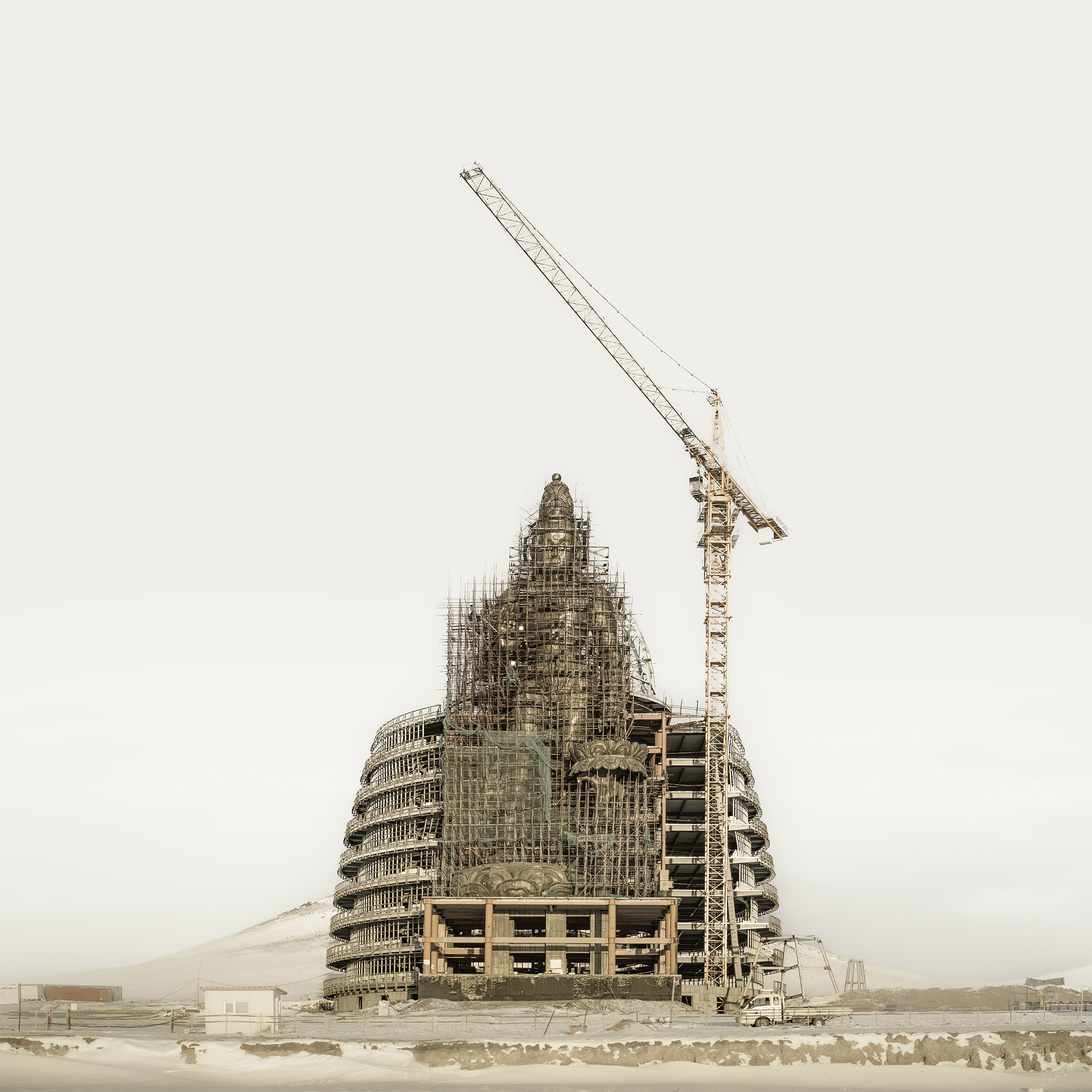
‘An Atypical Chinese Landscape’. These scenes and objects – the result of human production and labour processes serving human survival and life – are now left on the earth and have become the landscape. Some of these landscapes have become construction waste, destroying the living environment and becoming permanent scars. Image: © Fan Li, China Mainland, Finalist, Professional competition, Landscape, Sony World Photography Awards 2024
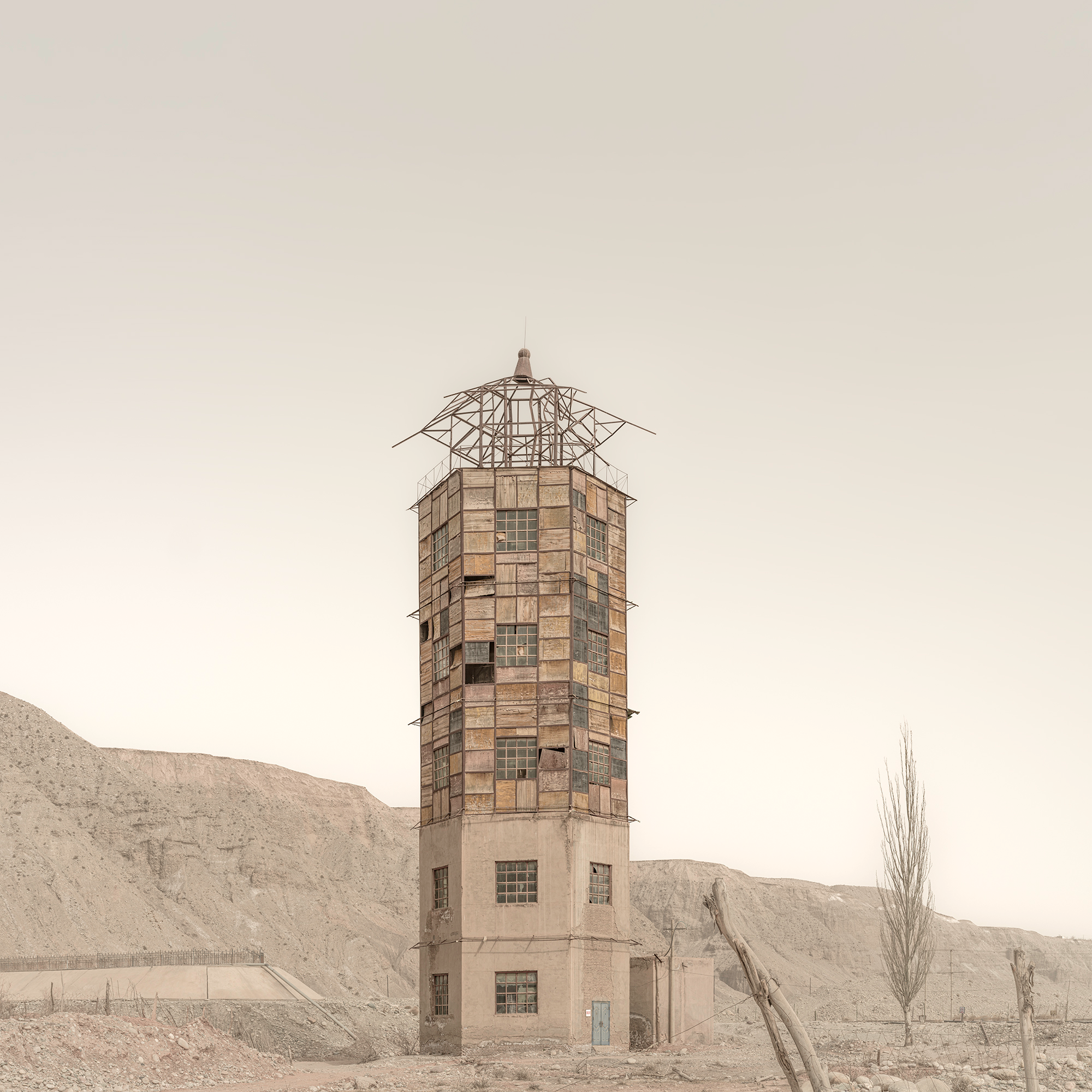
‘An Atypical Chinese Landscape’. Image: © Fan Li, China Mainland, Finalist, Professional competition, Landscape, Sony World Photography Awards 2024
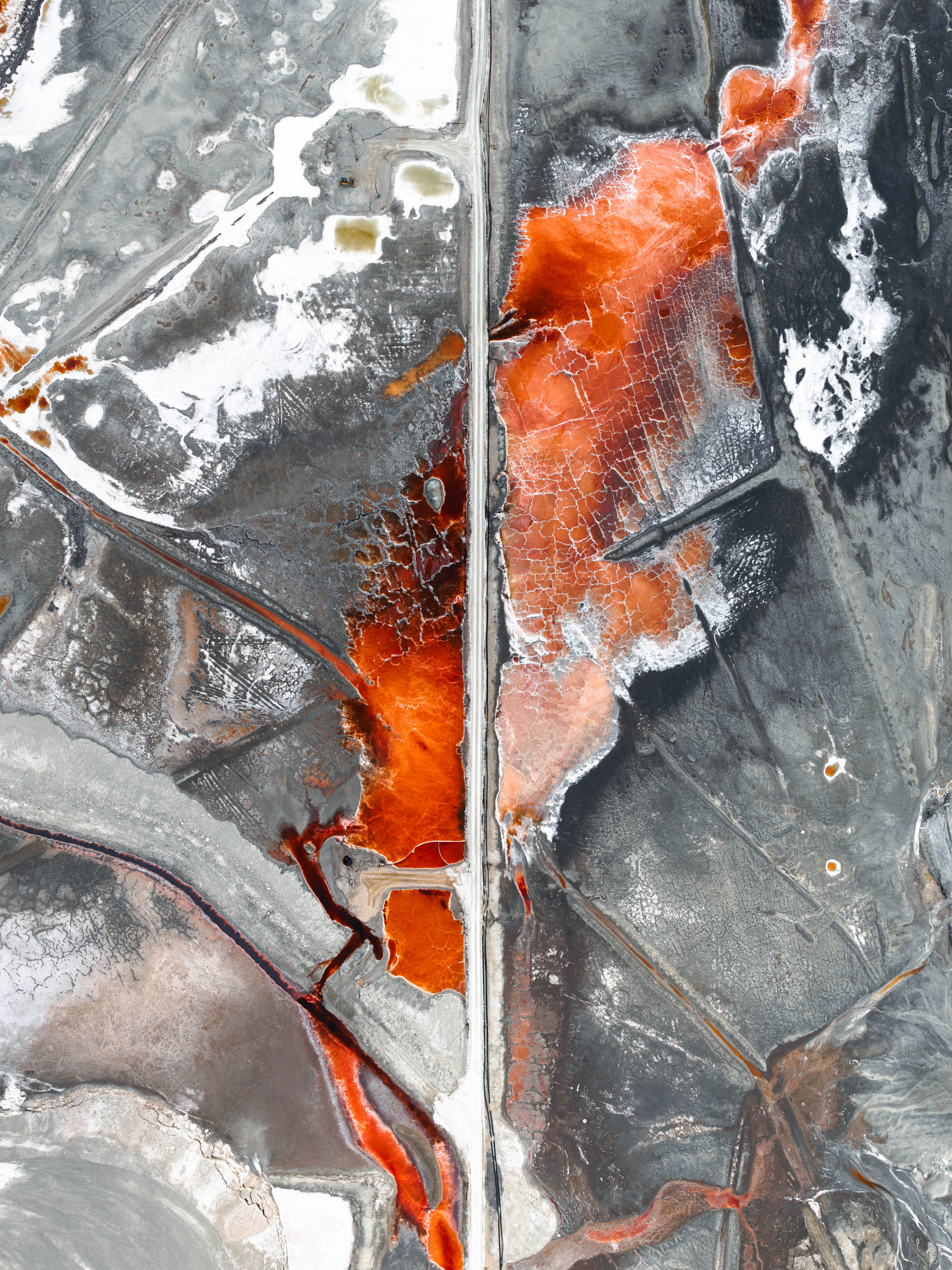
‘Borax Studies’. This project shows a rarely used method of Borax mining from the air. Borax (sodium tetraborate decahydrate) and borate minerals have diverse industrial applications. They’re used in the production of glass, ceramics and enamels due to their ability to lower melting points and improve strength, and they’re also essential in manufacturing fibreglass, insulation and as a component in detergents and cleaning agents. This project shows a rarely used method of mining borax from the air. Wells are drilled into the lakebed to reach the brine layer below the surface and pumps are used to draw the brine solution out. The extracted brine is then pumped into large evaporation ponds or pans, which have a large surface area and allow the sun and natural evaporation to concentrate the minerals within the brine. Over time, as the water evaporates, borax and other minerals become more concentrated and highly saturated colours are visible on the surface. Image: © Kevin Krautgartner, Germany, Shortlist, Professional competition, Landscape, Sony World Photography Awards 2024
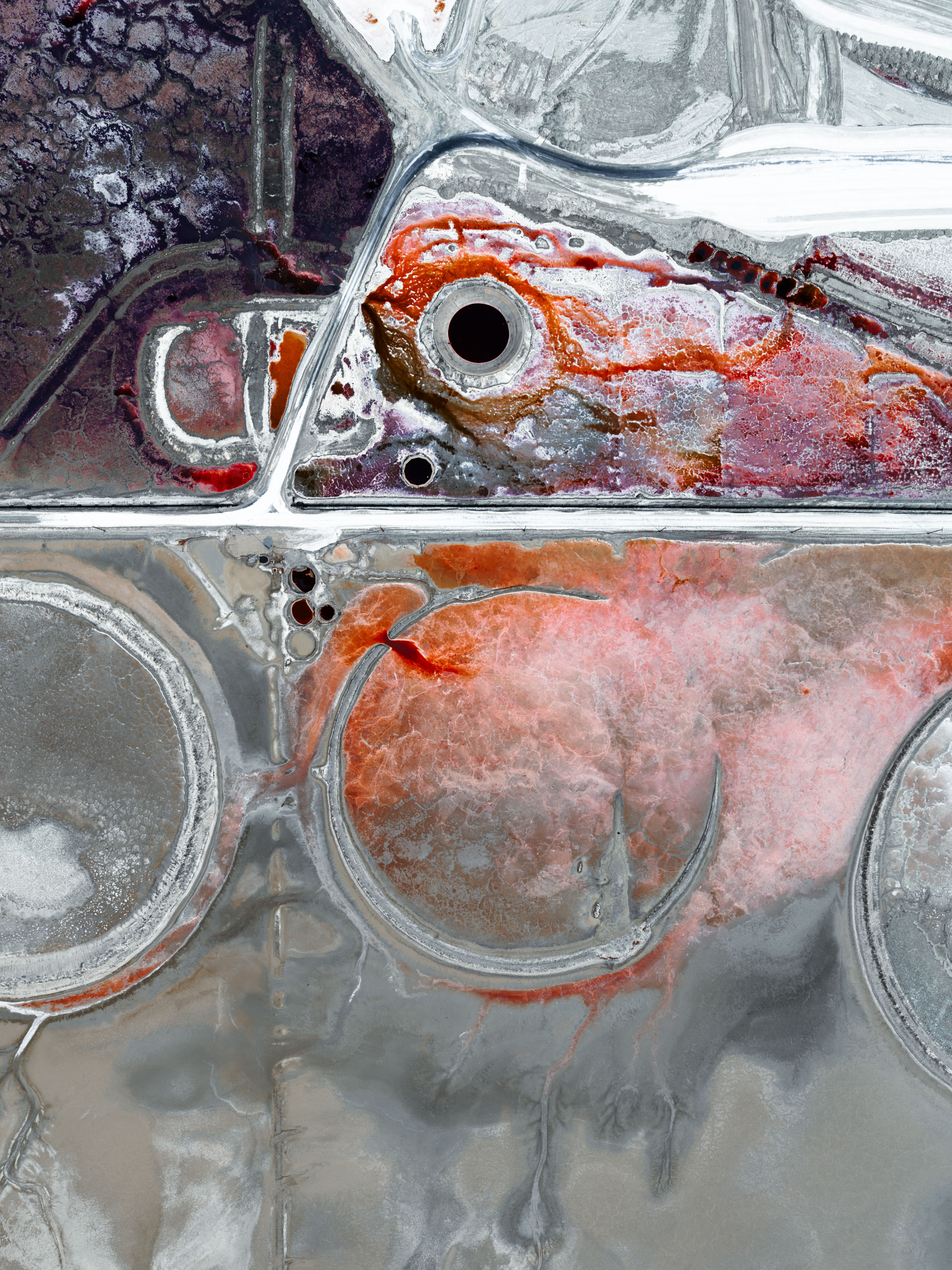
‘Borax Studies’. Image: © Kevin Krautgartner, Germany, Shortlist, Professional competition, Landscape, Sony World Photography Awards 2024
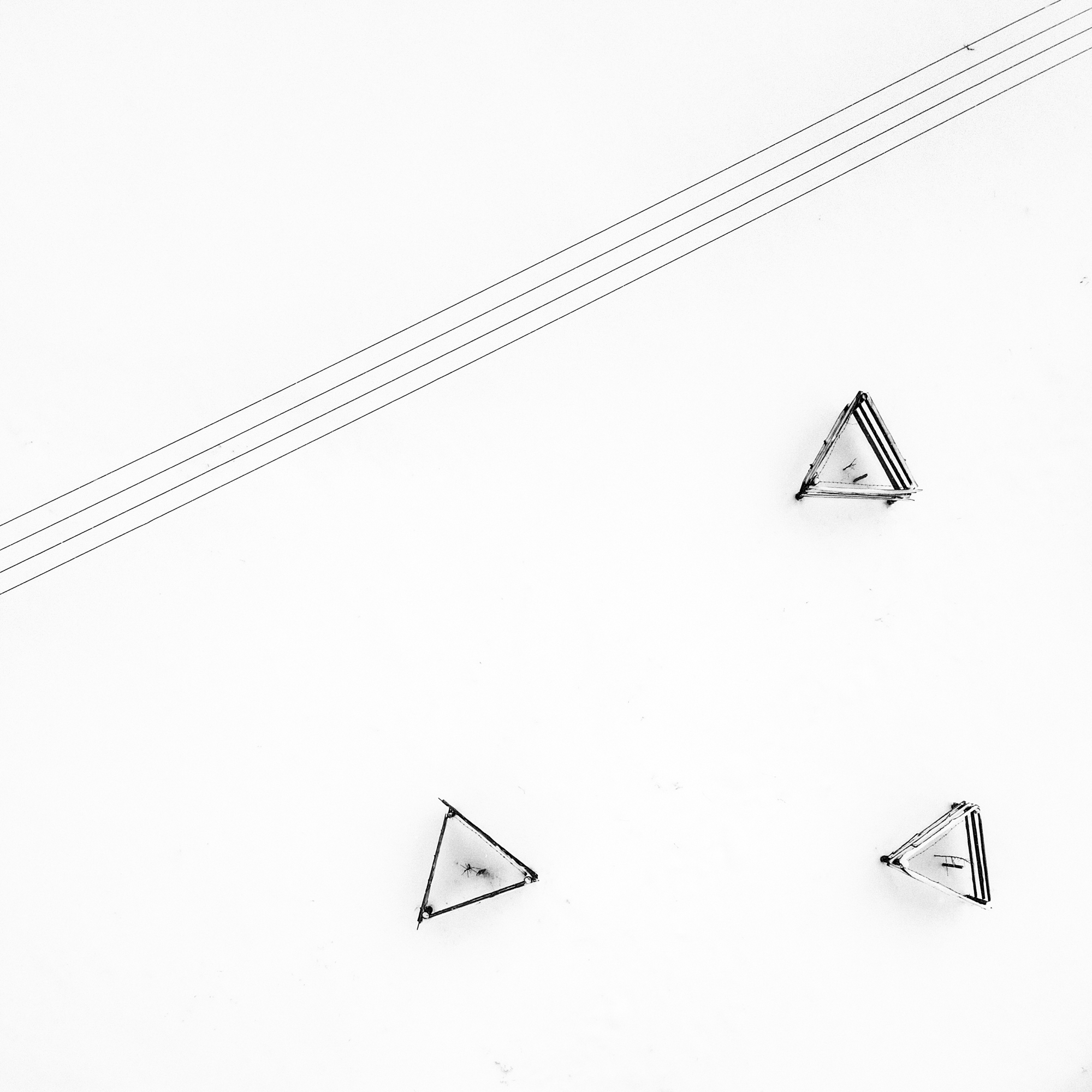
‘Winter geometry’. “I created this aerial series in the Carpathian Mountains (Ukraine). A bird’s eye view of these snowy rural landscapes is reminiscent of simple, minimalistic pencil drawings. I created this aerial series in the Carpathian Mountains in the Ivano-Frankivsk region of Ukraine. In these parts of Ukraine, the houses are sparsely placed on low mountains, sometimes close to the forest. This allows me to see more minimalist scenes of rural life. The snow-covered mountains resemble a blank sheet of paper, and a combination of elements of rural life and nature creates simple but no less amazing sketches resembling pencil drawings. This is especially noticeable from above, which is why I chose to work with a drone for this project. I spent many days hiking in the winter Carpathian Mountains looking for interesting subjects for this series.” Image: © Yevhen Samuchenko, Ukraine, Shortlist, Professional competition, Landscape, Sony World Photography Awards 2024
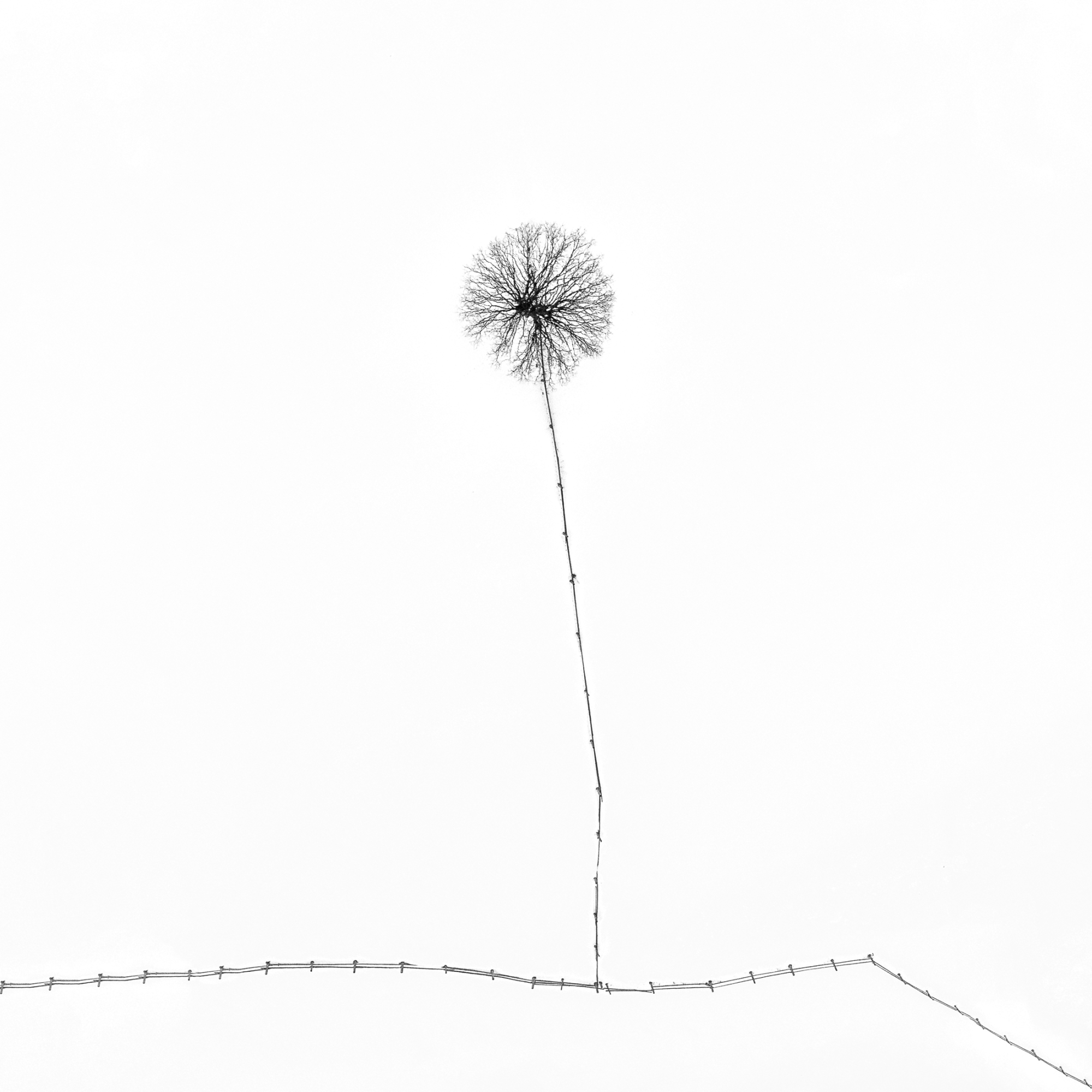
‘Dandelion’. Image: © Yevhen Samuchenko, Ukraine, Shortlist, Professional competition, Landscape, Sony World Photography Awards 2024
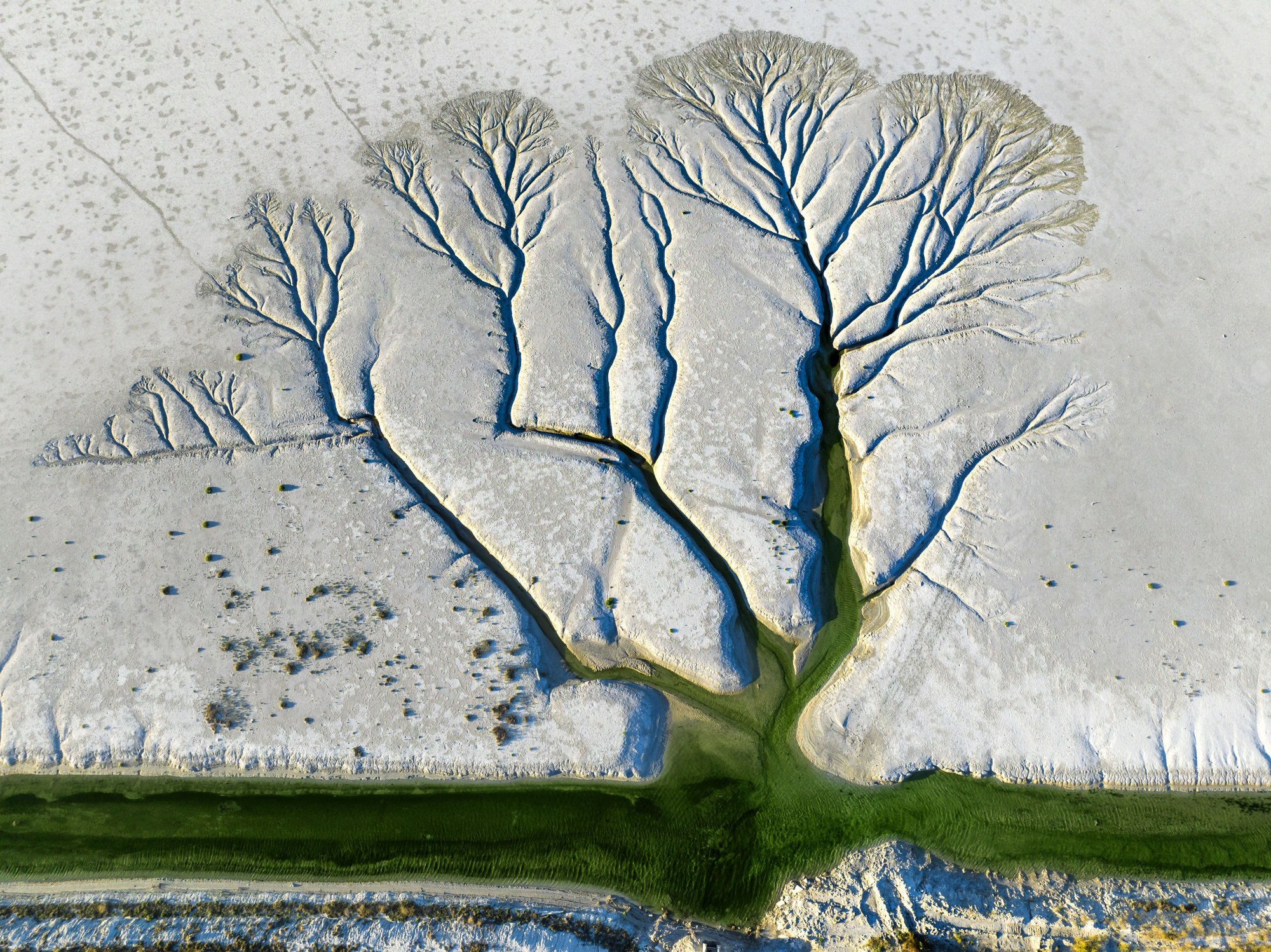
‘Dry Forest’. “This series of photographs was taken at Lake Acigöl in Afyonkarahisar Province, Turkey. I wanted to create a project based on drought, and used a drone to take the photographs in September, towards the end of the dry summer season. Our world is experiencing a global climate crisis. Pursuing the theme of drought, I found representations of bare trees and forests in dried lake beds and streams – almost as if Mother Nature is trying to tell us about the importance of water, trees and a clean world. ‘If the water disappears, we will all perish.’” Image: © Ekrem Sahin, Turkey, Shortlist, Professional competition, Landscape, Sony World Photography Awards 2024
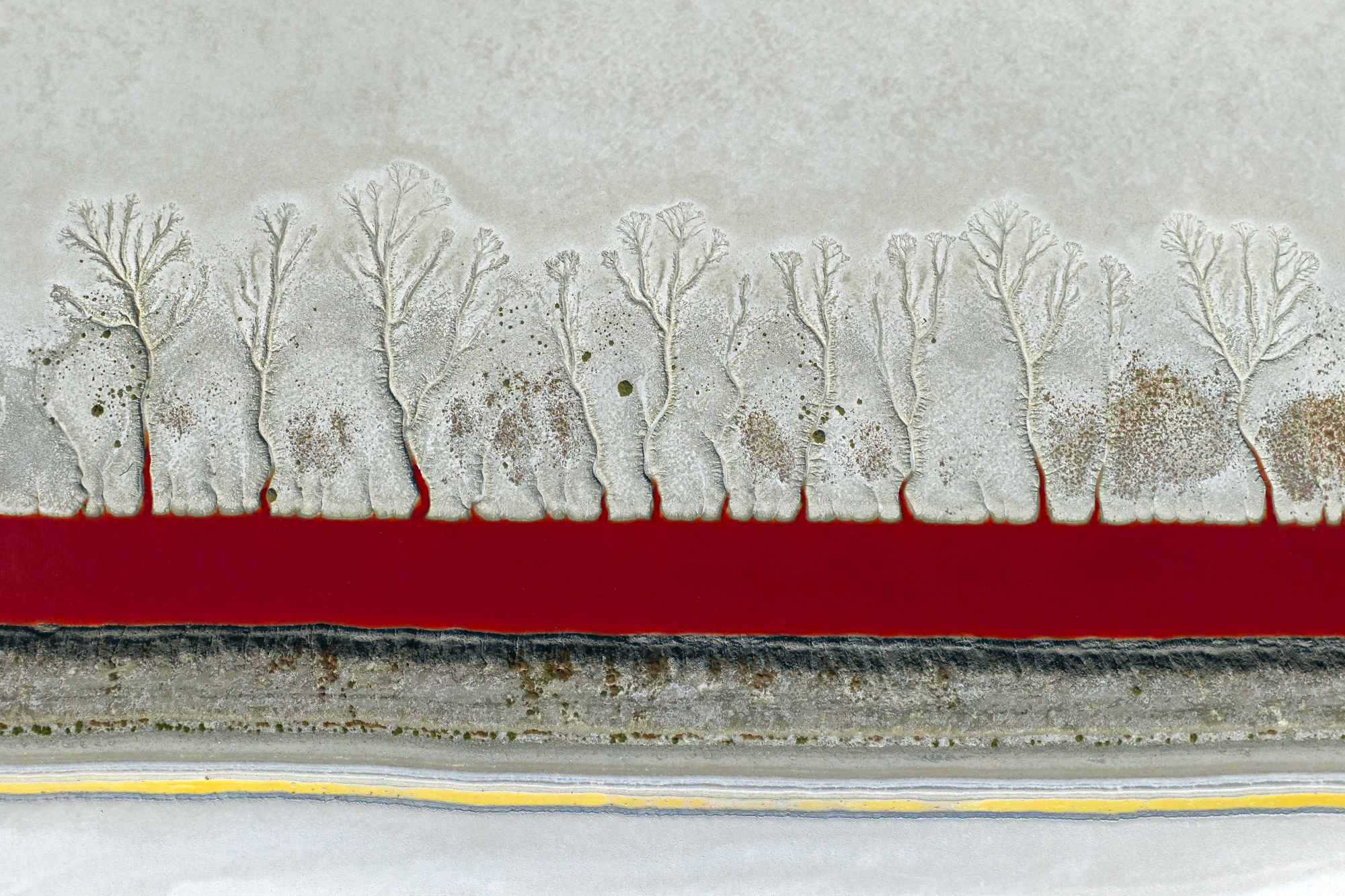
‘Dry Forest’. Image: © Ekrem Sahin, Turkey, Shortlist, Professional competition, Landscape, Sony World Photography Awards 2024
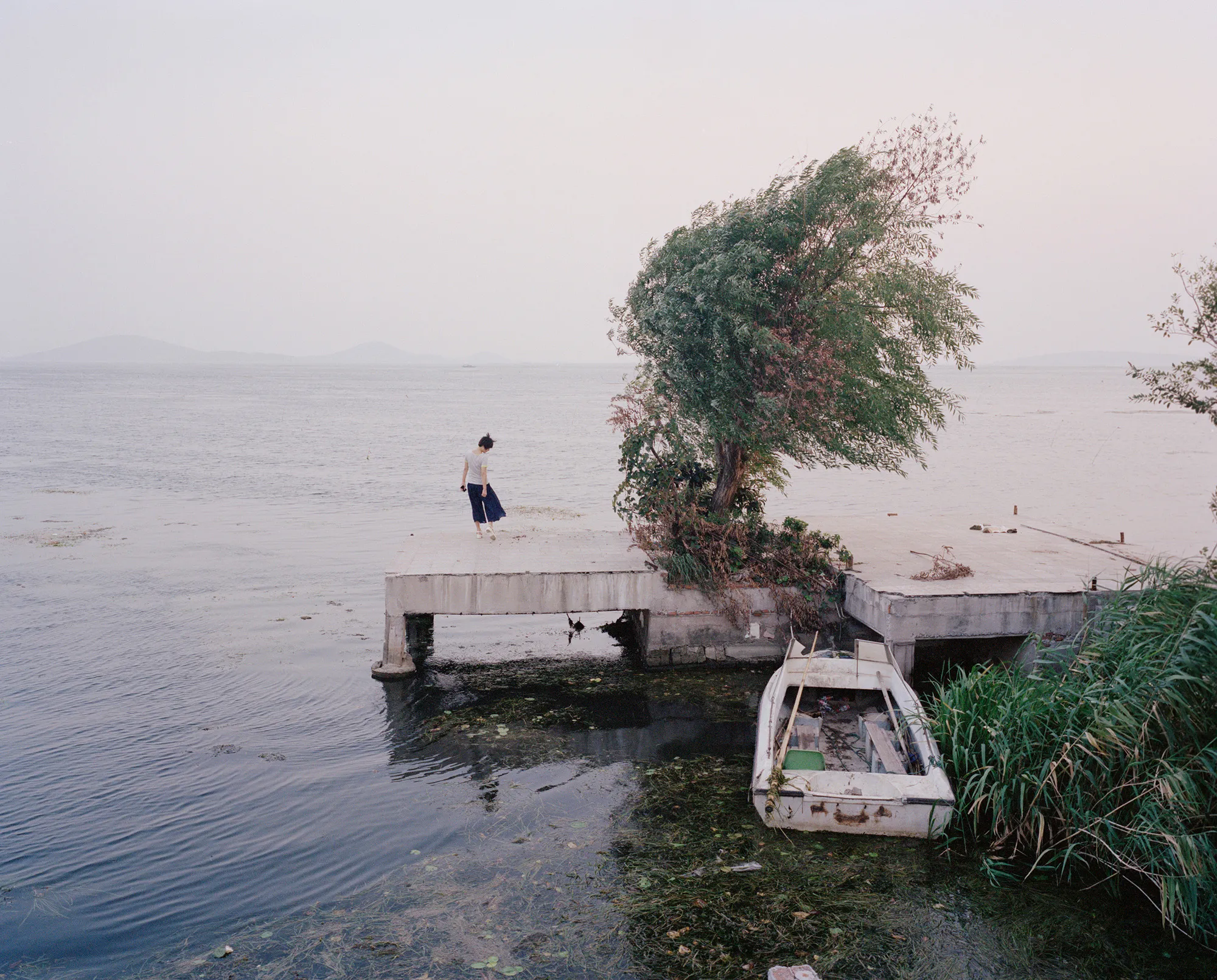
‘A Home That is Changing’. “China is one of the fastest growing and fastest changing countries in the world. Like all countries, it also faces the consequences of global warming and environmental change: we live on the same planet and share a future. I hope that these photographs encourage people to think about the relationship between human development and a harmonious coexistence with the natural environment”. Image: © Liang Chen, China Mainland, Shortlist, Professional competition, Landscape, Sony World Photography Awards 2024
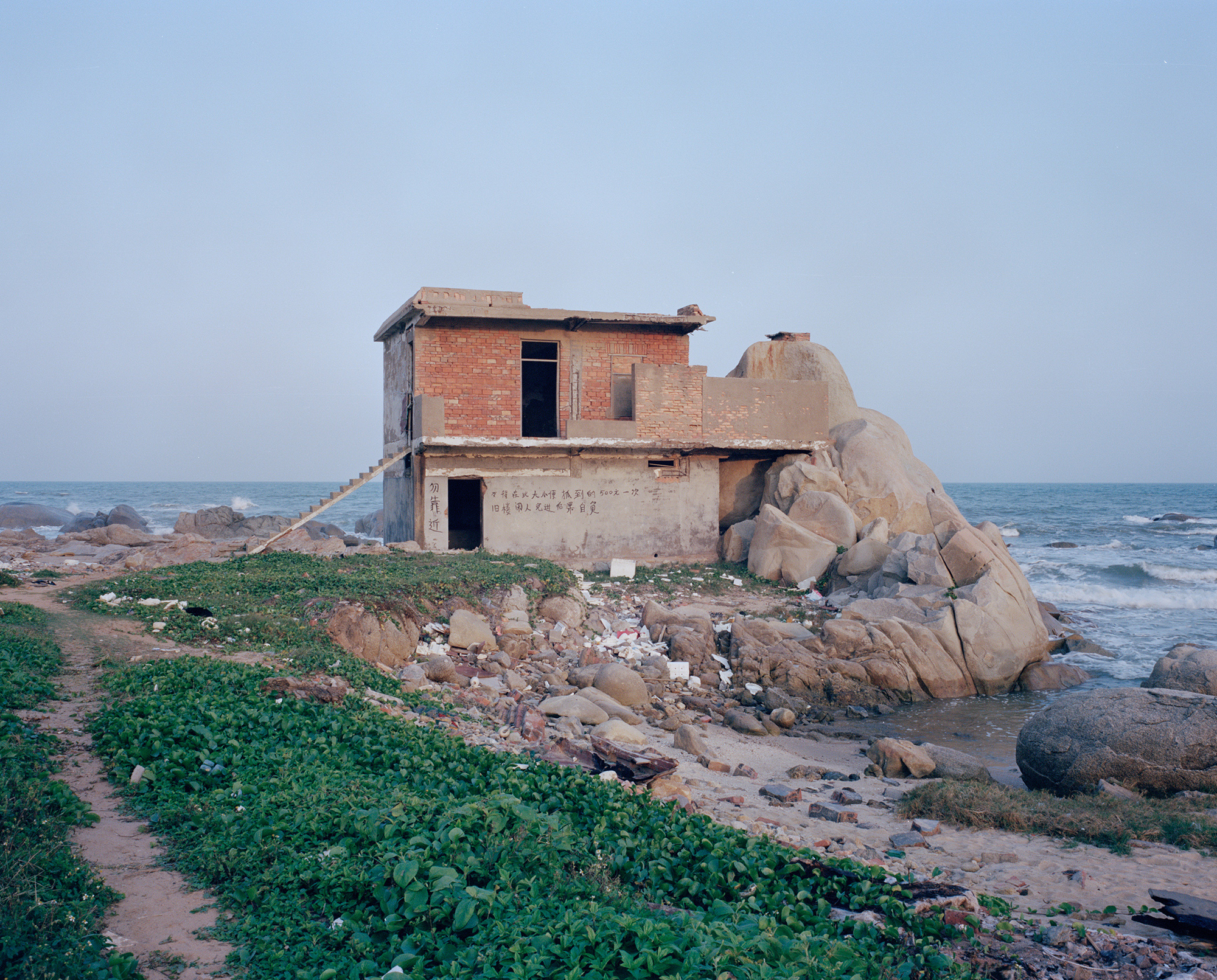
‘A Home That is Changing’. Seaside house. Zhanjiang, China, 2022. Image: © liang chen, China Mainland, Shortlist, Professional competition, Landscape, Sony World Photography Awards 2024
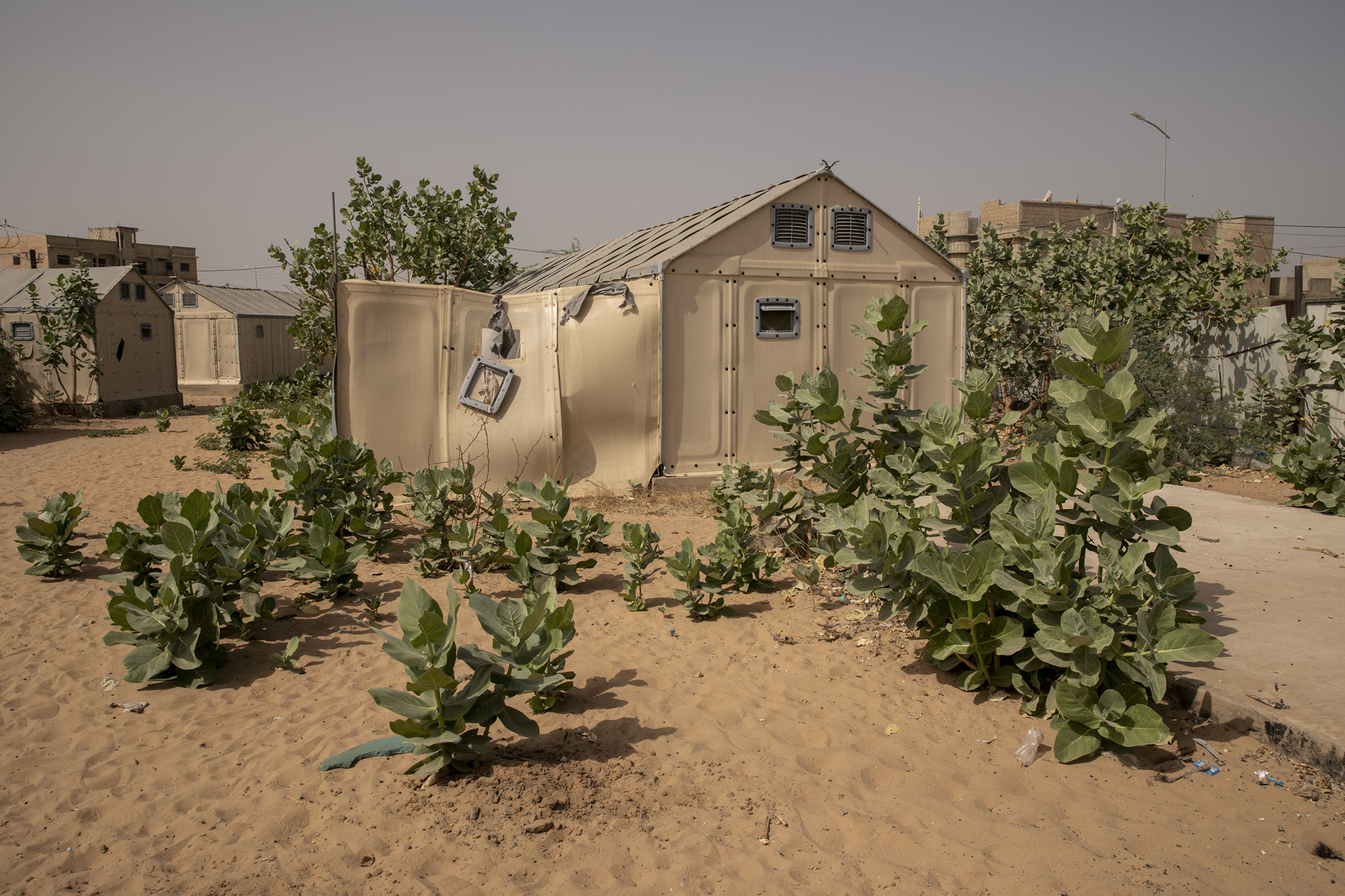
A general view of the temporary Djougop camp for internally displaced people who lost their homes due to coastal erosion in Saint-Louis, Senegal. The camp is located 11 kilometres inland and people live in small tents without bathrooms and electricity. Toilets and taps for running water are shared. The rising sea levels generated by climate change are threatening the coast of Senegal, destroying one house after another. Senegal loses around five metres of coastline every year and the dangers to the population – 80 percent of whom live near the sea – are growing more and more. According to experts, sea levels on the coast of West Africa will rise by up to four millimetres a year, forcing thousands of people to abandon their current homes. Image: © Alessio Paduano, Italy, Shortlist, Professional competition, Landscape, Sony World Photography Awards 2024
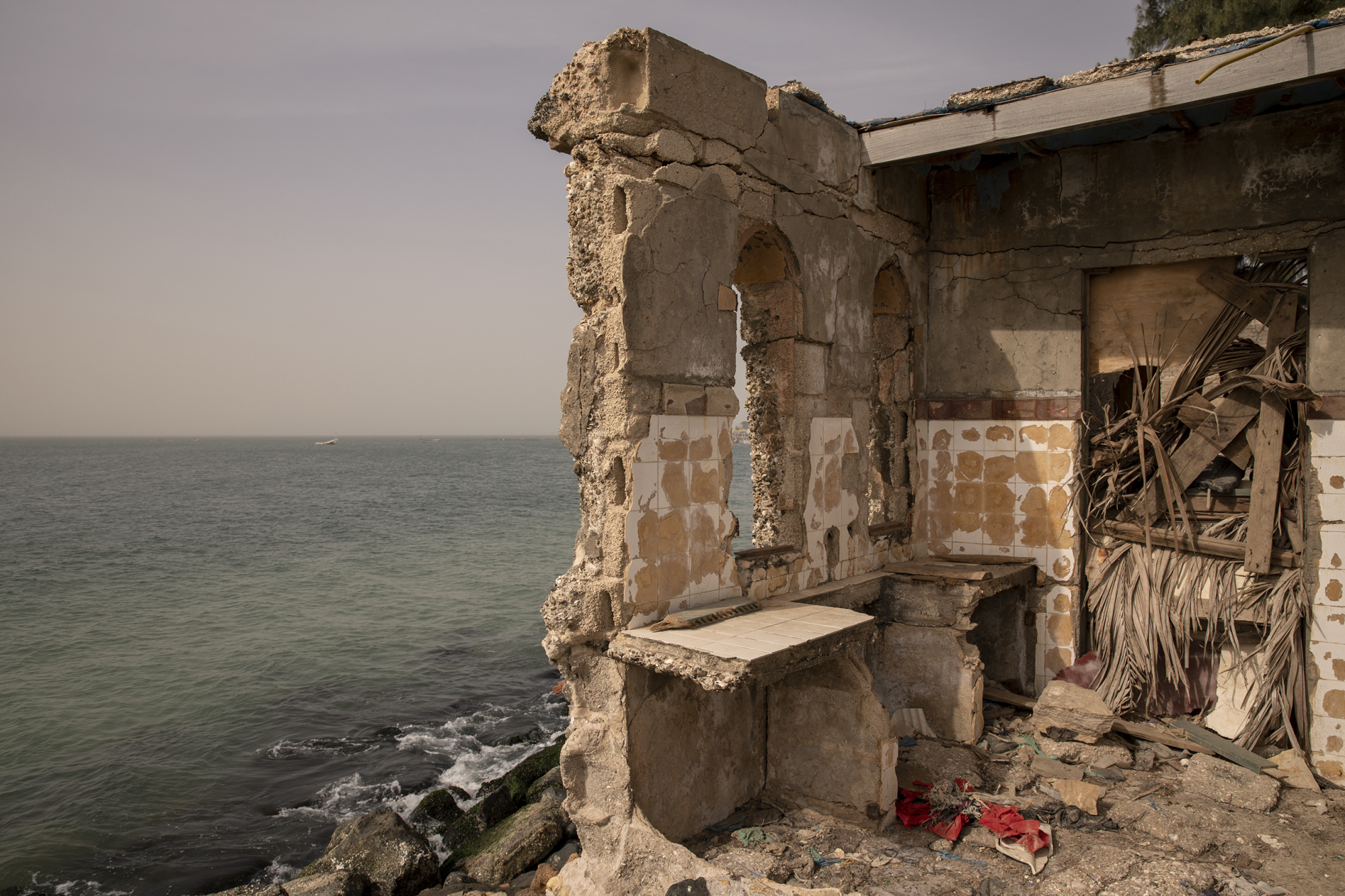
The remains of a house in Rufisque, Senegal, which was destroyed by the sea. The rising sea levels caused by global warming and melting glaciers is destroying one house after another. Image: © Alessio Paduano, Italy, Shortlist, Professional competition, Landscape, Sony World Photography Awards 2024
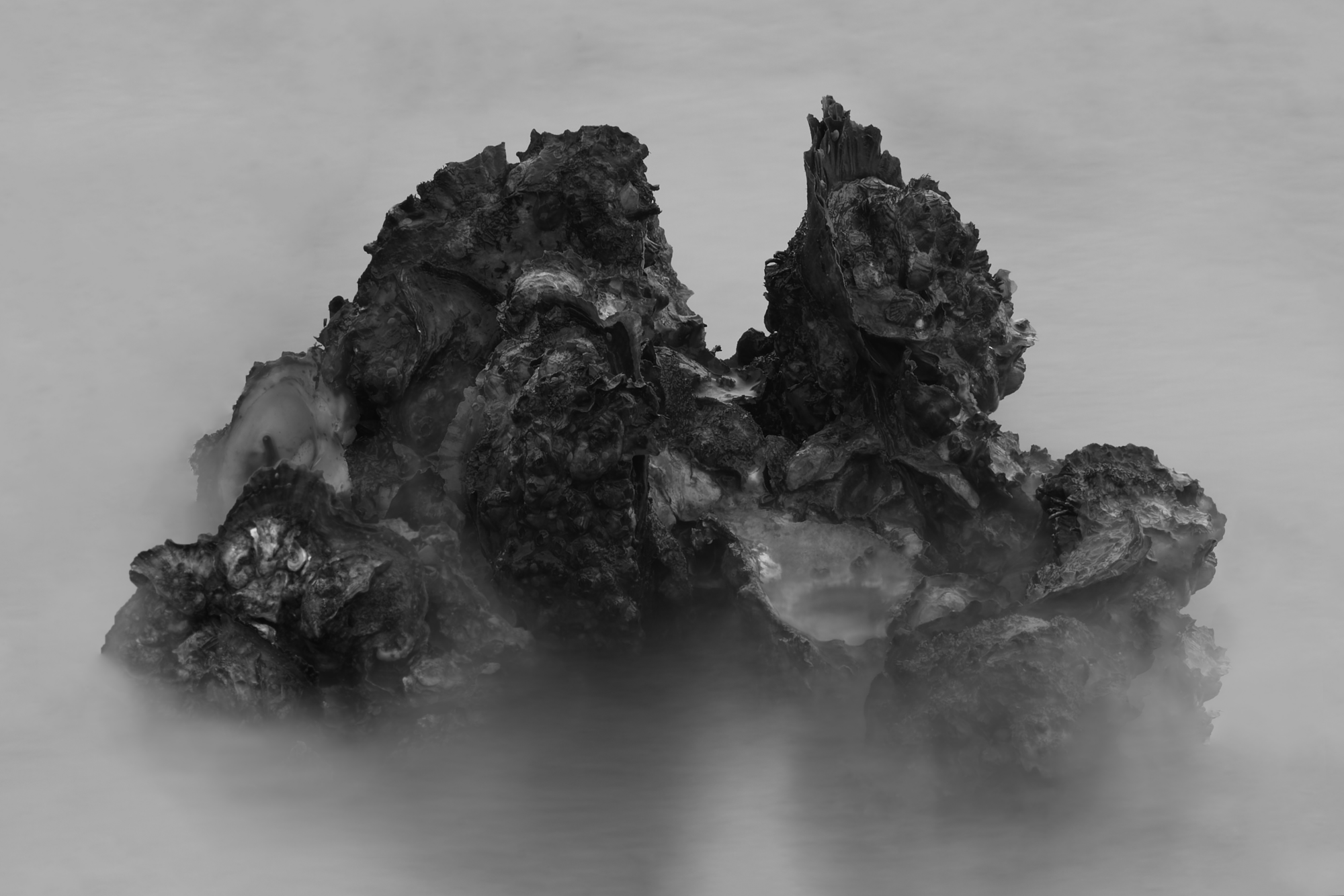
‘Oyster Mountain’. Photographed in Coloane, Macau. “As the water of the Hao river is transformed into a distant fog, I hope to present the viewer with ancient Macao, which has faded in the tide of history, and to create a quiet, washed-out realm of oyster mountains. Taking Macao’s once-thriving oyster farming industry as the theme of an ‘archeological’ exploration, the series Oyster Mountain took advantage of the low-angle viewpoint and centered the composition to capture the oyster reefs as majestic mountains with the moving waves turned into fog. The work reveals the connection between classical Chinese landscape painting with black and white photography. It symbolises the significance of the traditions which have been slowly disappearing in the process of modernization, as Macao becomes a more glitzy and glamorous destination,and to remind the viewers of the importance of maintaining a balance between environmental protection and economic growth”. Image: © Haozheng Wu, Macao, Shortlist, Professional competition, Landscape, Sony World Photography Awards 2024
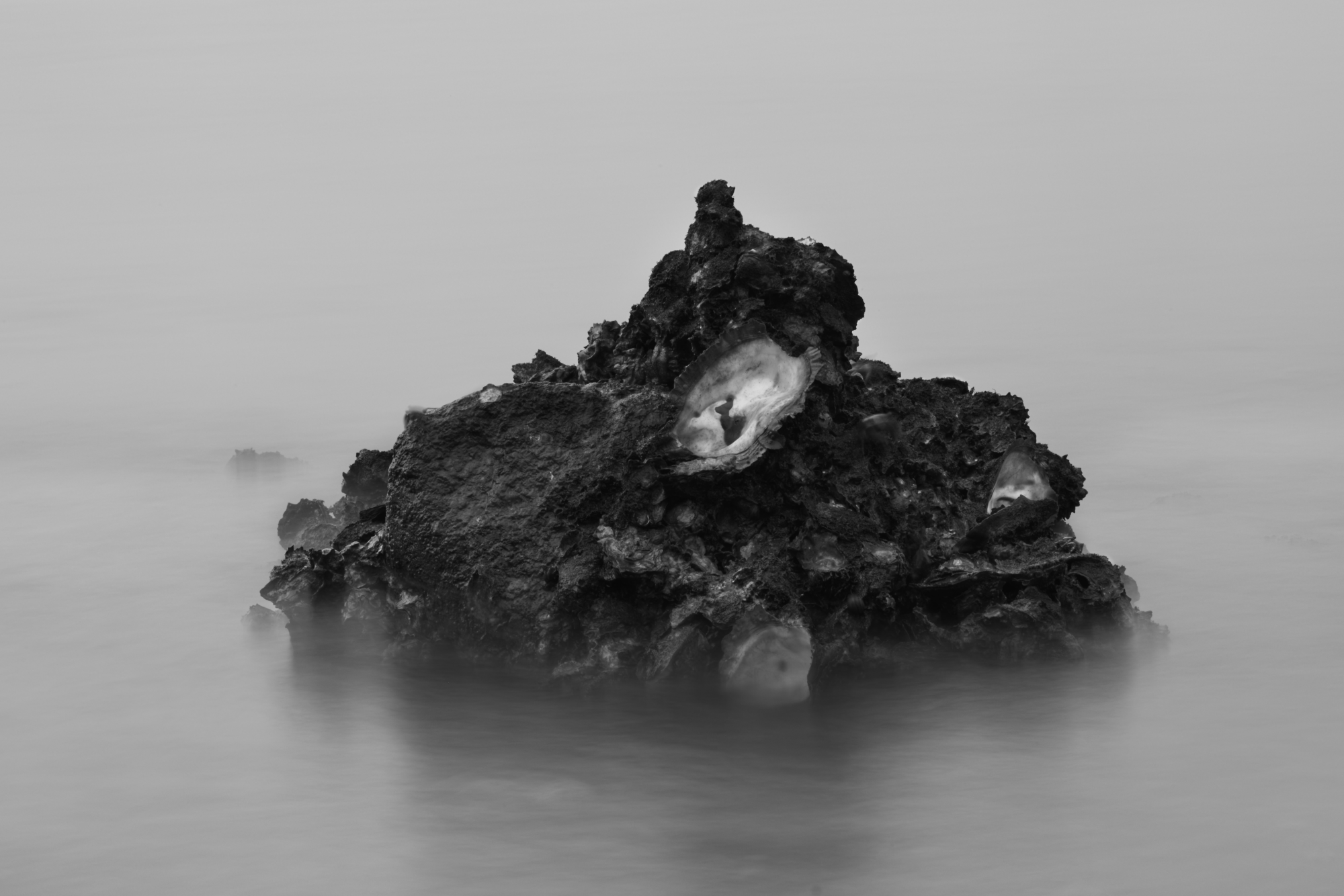
‘Oyster Mountain’. Photographed in Coloane, Macau. Image: © Haozheng Wu, Macao, Shortlist, Professional competition, Landscape, Sony World Photography Awards 2024
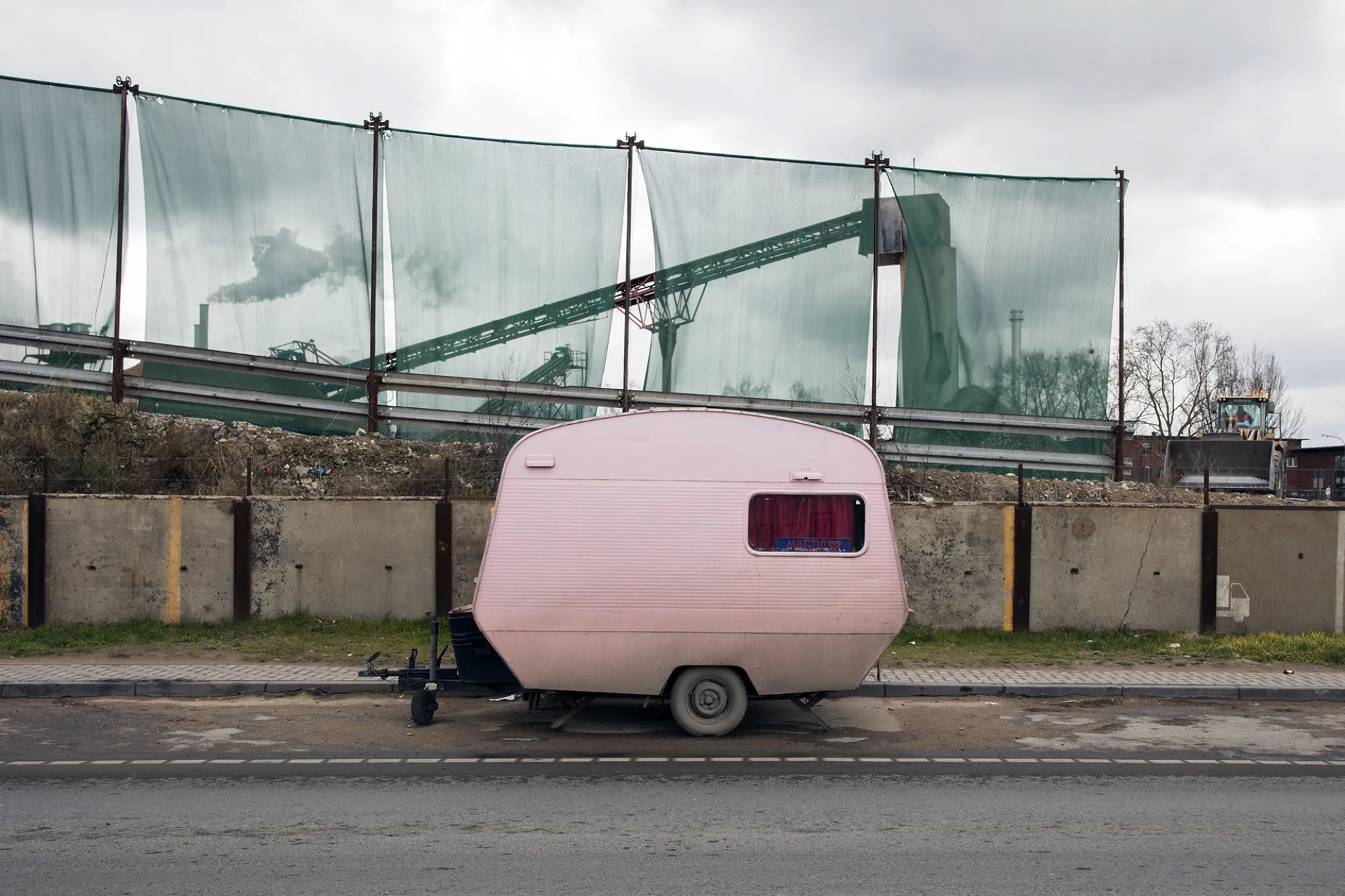
‘Once Upon a Time’. Magda’s love caravan. In this parking strip at the Cologne-Eifeltor industrial estate, prostitutes wait for their customers in 10–15 caravans. The space between two caravans is just large enough to park a car. “‘Once Upon a Time’ is a portrait of the post-industrial heart of Western Europe, which was published in my first photobook with the same title (Lecturis, 2023). It shows what the impact can be on an area if large industrial companies close and the local economy has to reinvent itself. The project started in 2015 in my hometown of Maastricht, and my journey of discovery has taken me through the raw post-industrial landscape of Germany, Belgium and The Netherlands. Together, the photographs tell a story about people trying to make the best of their lives in a region with an uneasy cinematic beauty.” Image: © Hendrik J. Hunter, Netherlands, Shortlist, Professional competition, Landscape, Sony World Photography Awards 2024
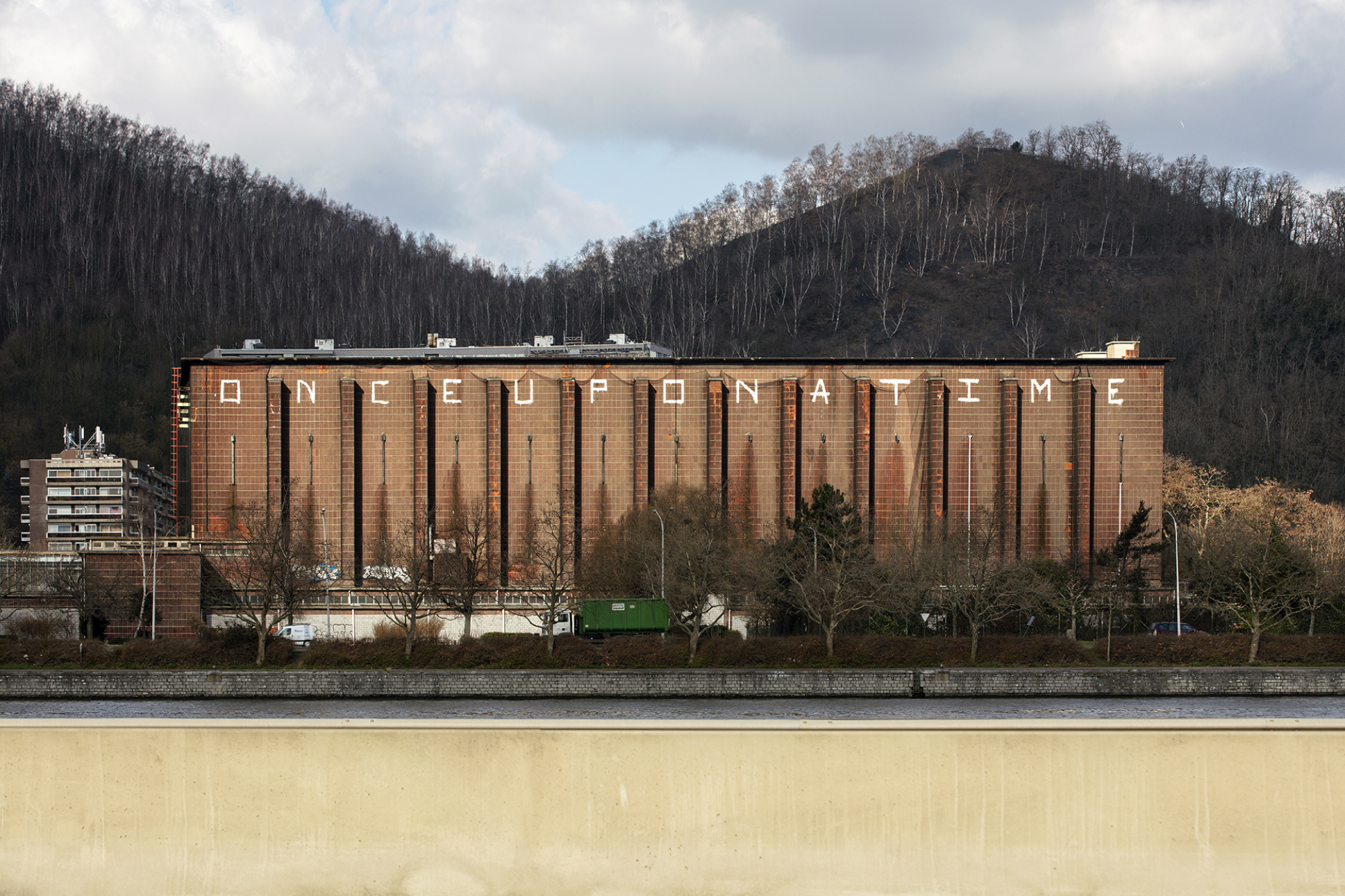
‘Once Upon a Time’. “The abandoned Palais des Sports (1939) in the district of Coronmeuse, near Liège, with two slag heaps in the background. The building was last used as an ice hockey hall. It’s an emblematic building that’s now undergoing renovation as part of the area’s transformation into an eco-friendly quarter. The graffiti gave me the title for my book, which was published in March 2023 by Lecturis in the Netherlands. Once Upon a Time is a portrait of the post-industrial heart of Western Europe, which was published in my first photobook with the same title (Lecturis, 2023). It shows what the impact can be on an area if large industrial companies close and the local economy has to reinvent itself.” Image: © Hendrik J. Hunter, Netherlands, Shortlist, Professional competition, Landscape, Sony World Photography Awards 2024 DM


















 Become an Insider
Become an Insider
Comments - Please login in order to comment.